Quoth The Corvid, Yellowstone
✍️ • 🕑 • Series: Go West, Young Lad • Tags: geysers • lakes • waterfalls • rivers • canyons • Yellowstone National Park • National Parks • Places: East Entrance to Yellowstone • Nine Mile Post / Turbid Lake Trail Trailhead • LeHardy Rapids • Mud Volcanos • Grand Canyon of Yellowstone • Norris Geyser Basin
Of all of the places I ever visited as a youngster, Yellowstone National Park left the biggest impression on me. I thought its geothermal features were spectacular, its nature unparalleled, and its crowds easy enough to overlook when everything else was so spectacular.
I made sure when I planned my trip West to not just visit Yellowstone but to spend as much time there and just outside there as seemed reasonable. So, after a day spent just outside the park boundaries, I would spend a total of three days visiting the park.
I hadn’t planned much of a park itinerary, but I wanted to visit a mix of popular and less popular spots. Along these lines, I picked out my first planned hike, one not far from the park’s east entrance.
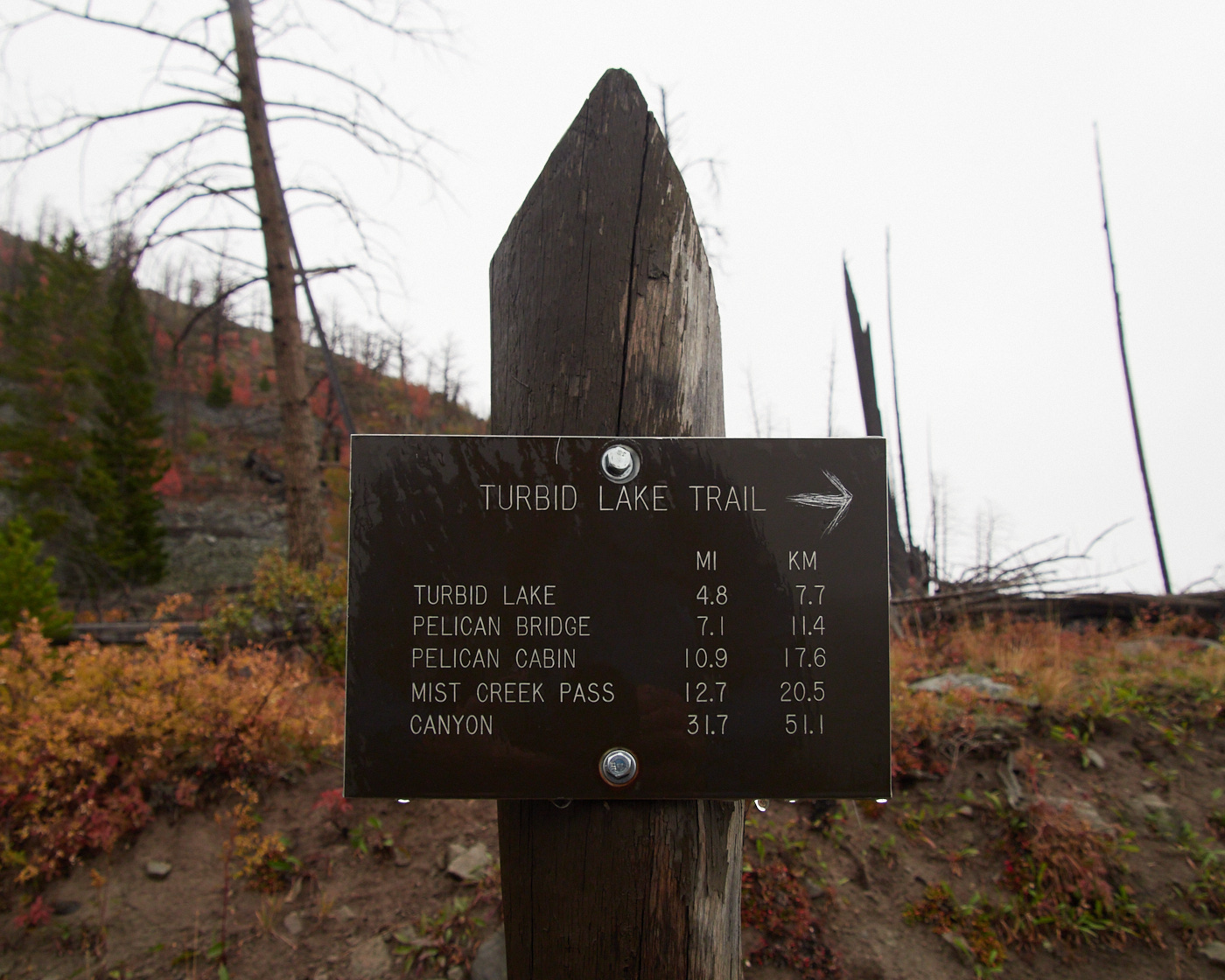
Soon, it would turn out there were a few other things I hadn’t necessarily planned on. Like snow.
Table of Contents
Turbid Lake
What The Deal Is With This Lake?
On my first day in Yellowstone, I was determined to make the most of my stay near the southern end of the park, and check out some local areas. I had looked around a bit on the National Park Service app, which struggle-bussed to an inane degree at downloading maps and such onto my limping iPhone 6S, and I had noticed a trail near-ish to the entrance that seemed promising. See, it went to a spot called “Turbid Lake” and I was pretty certain that this would be the ticket. It said that the lake had some “unique geological characteristics,” though it failed to clarify in any way… what those were.
So, when I entered the park, pulling up to the booth to show my America the Beautiful Pass, I asked what was so unique about turbid lake. The ranger didn’t know, but asked a few colleagues, one of whom was able to enlighten me.
Turbid lake is acidic and was likely formed in an explosion thousands of years ago.
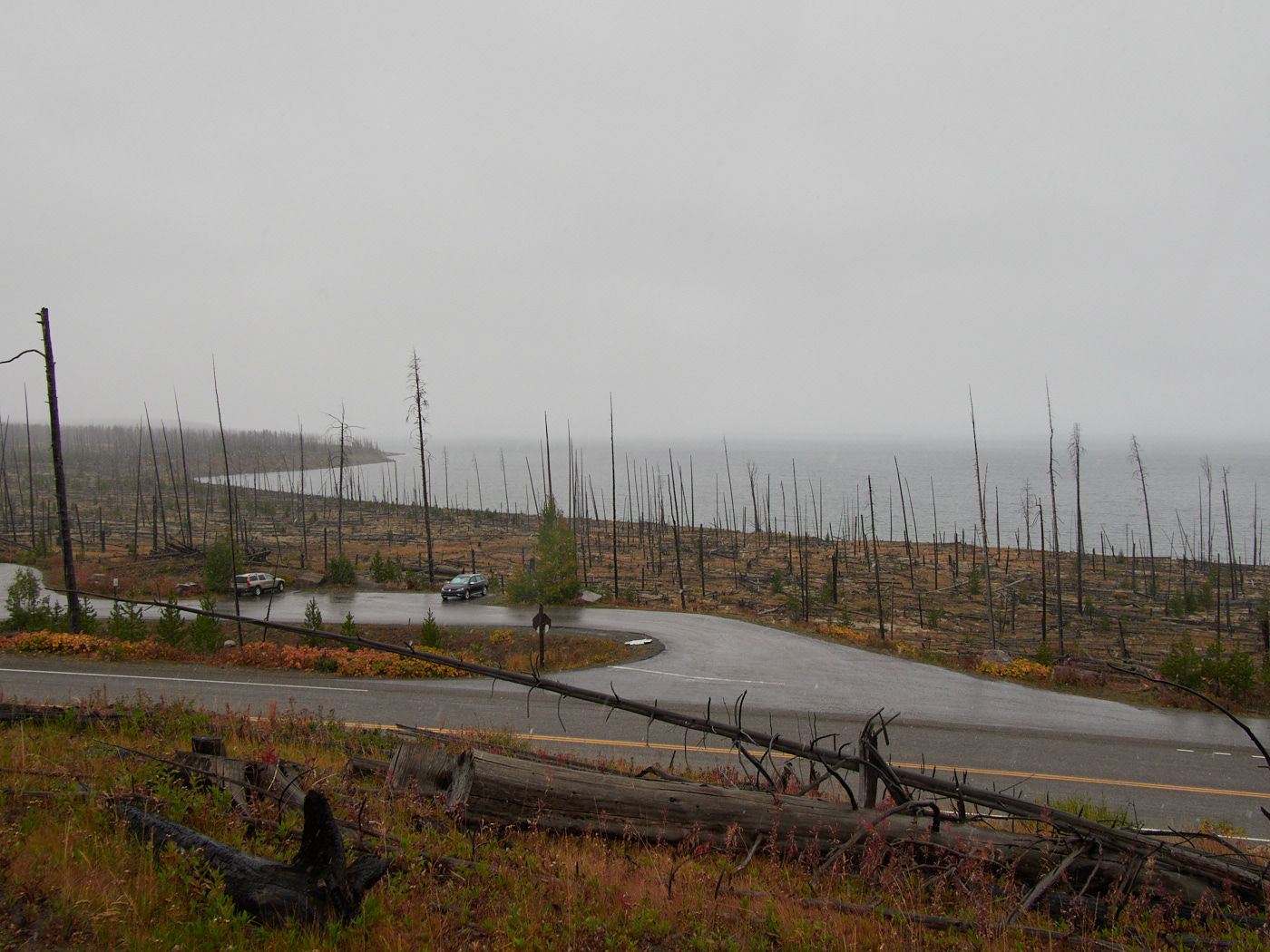
Off the Beaten Path
Getting off the beaten path in Yellowstone is easy. The park is still large enough that it’s full of vast tracts of backcountry and numerous less utilized hikes.
It was cloudy and a bit drizzly when I got to the trailhead, but those conditions didn’t seem like enough to stop me from going on a hike. My lightweight trekking pants, intended for summery weather, were water resistant enough. My open-top mesh trailrunners, decent enough in drizzle.
I noticed a few other cars stopping near the parking area, but no one else hiking. It seemed a bit odd, but whatever. I set out. The temperature was cold, but body heat under exertion can counter that fairly well, right? It was still early in the day, so it was also reasonable to expect a rise in temperatures, right?
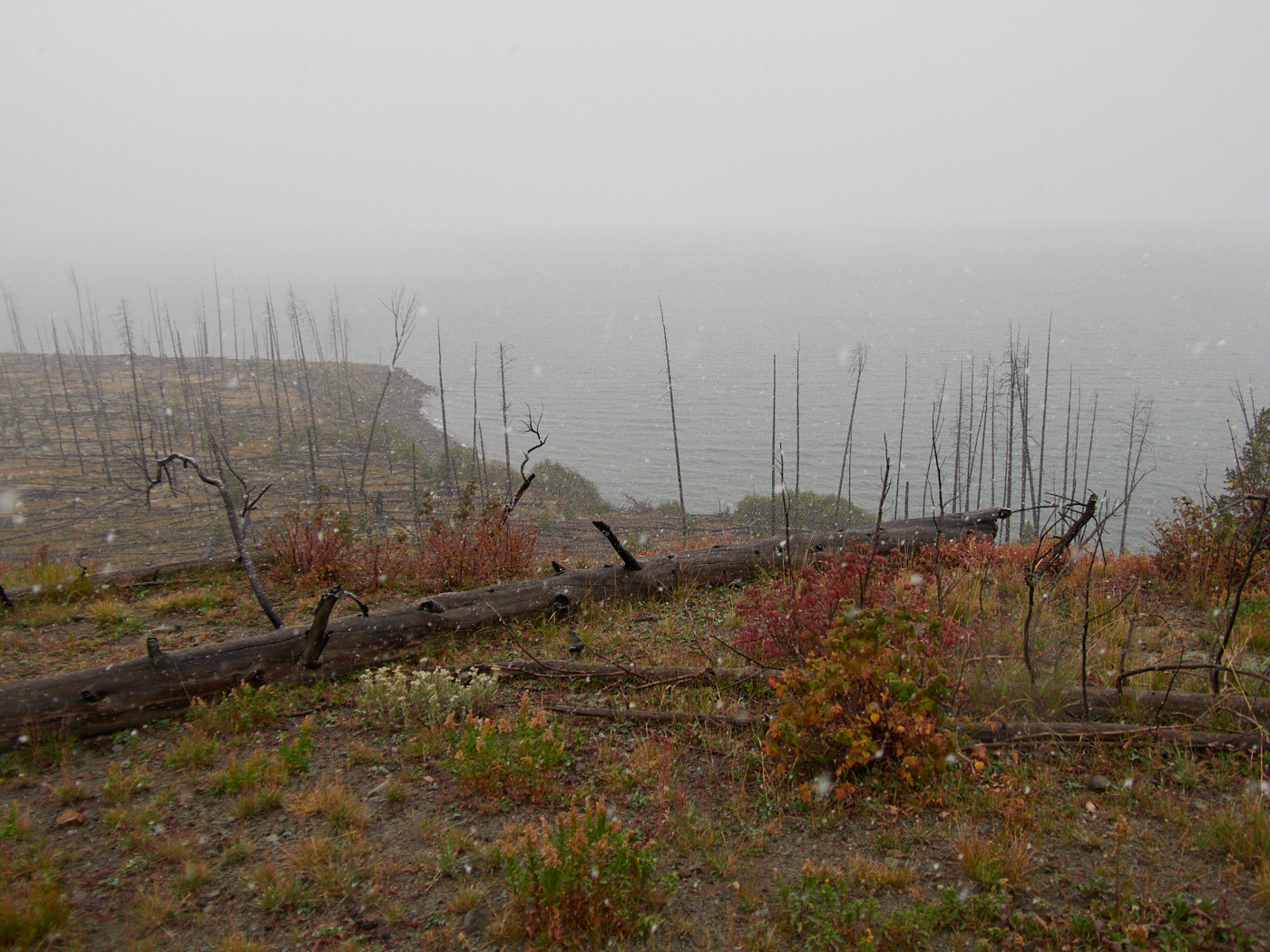
Cold Feet
As I continued along, I saw how unbeaten the path was: there was a decent amount of wet vegetation, and my feet were quickly wet and cold. The rain turned to snow, and I decided to turn around. I realized how unprepared I was.
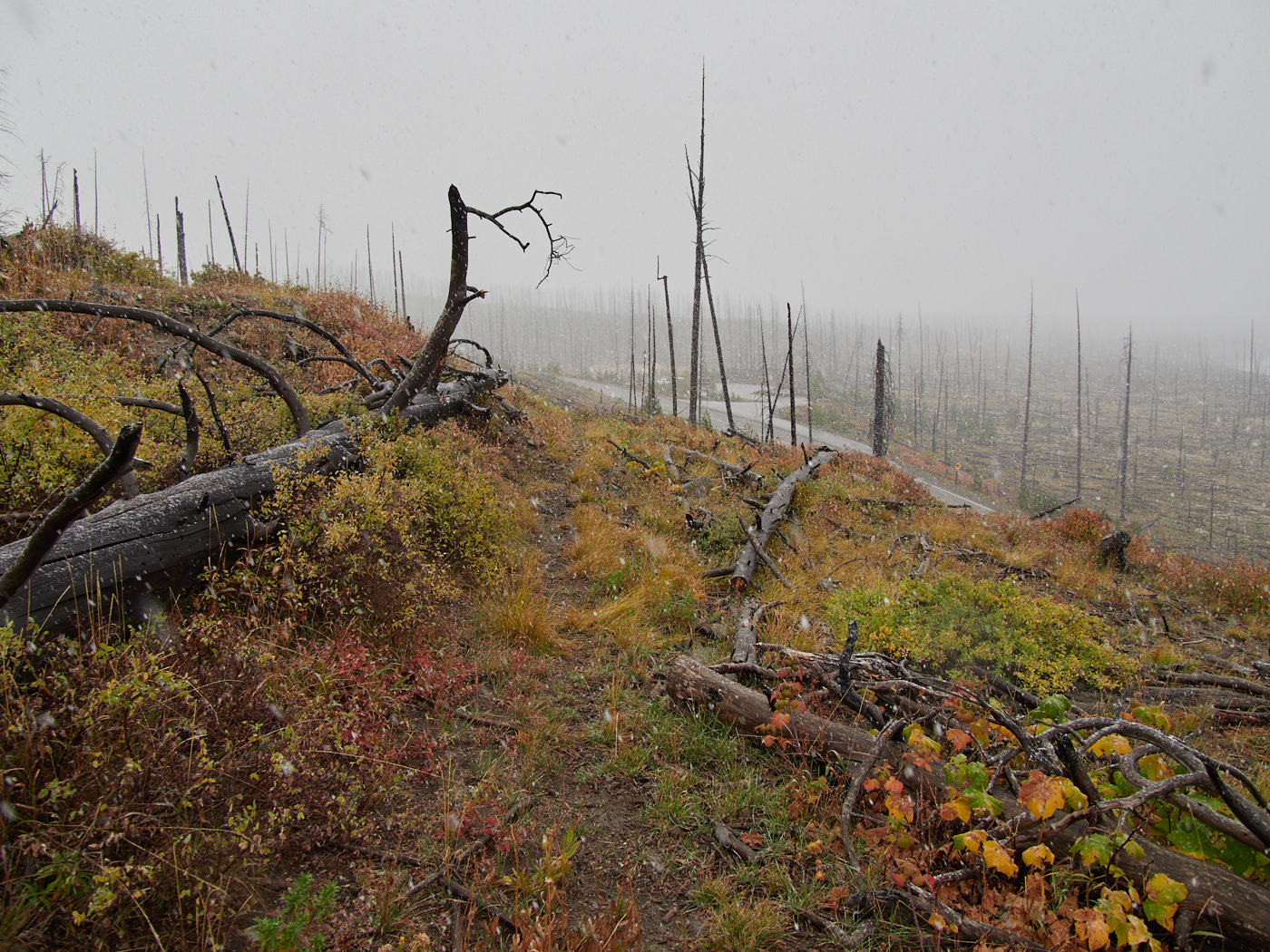
I had plenty of layers for warm car camping, but I had sent all of my leggings/thermal leg covers to Seattle ahead of me. I had none of them on me. In my car, I had two pairs of shoes: my trailrunners, and a pair of barefoot-style sandals. I was in one of the premiere sections of preserved wilderness in the whole world, let alone North America, and I was unlikely to be able to fix those issues any time soon.
As I drove onwards in my car, wet socks in the passenger seat, floor heat vents blaring, I knew I would spend the rest of this day (at least) sticking to more beaten paths…
More Beaten Paths
I had hoped to maybe stop at a Visitor’s Center, and, maybe use an indoor toilet. Maybe, a hand dryer? But, the ones I happened upon were closed. So I continued onwards. My shoes remained wet, but other than that I was dry and happy.
LeHardy Rapids
I took a brief gander at these impressive rapids, which apparently once flipped over the boat of someone named LeHardy.
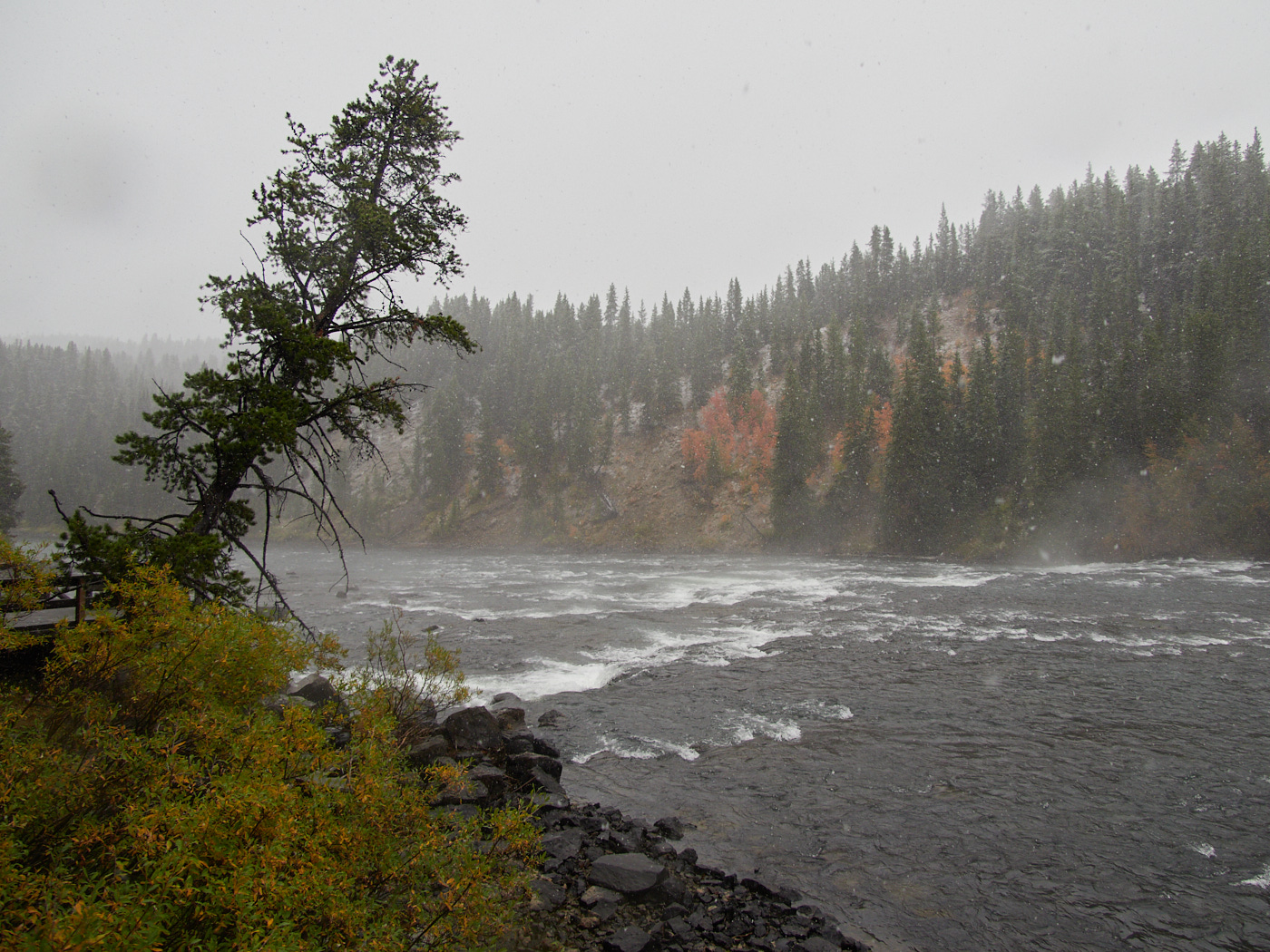
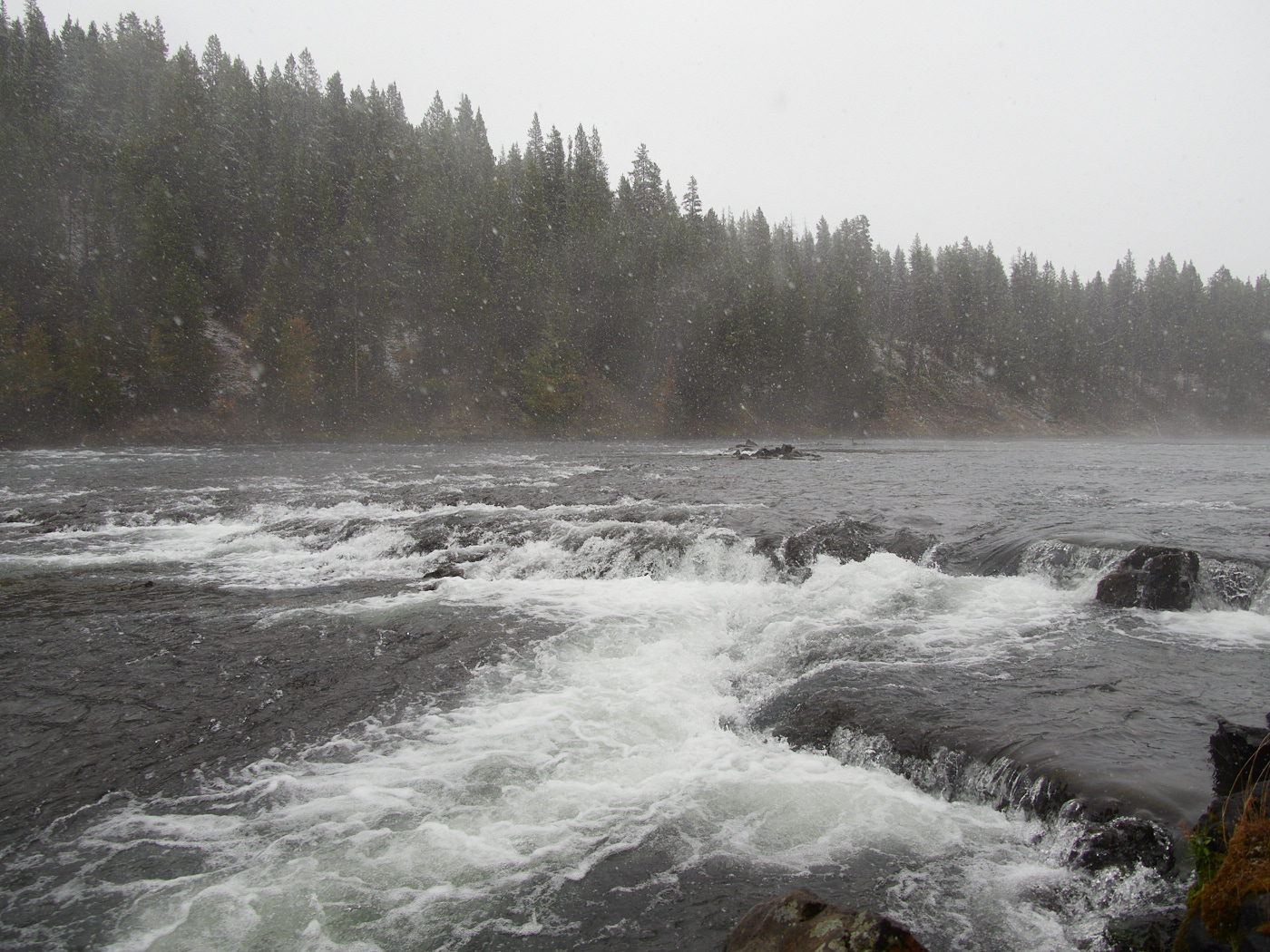
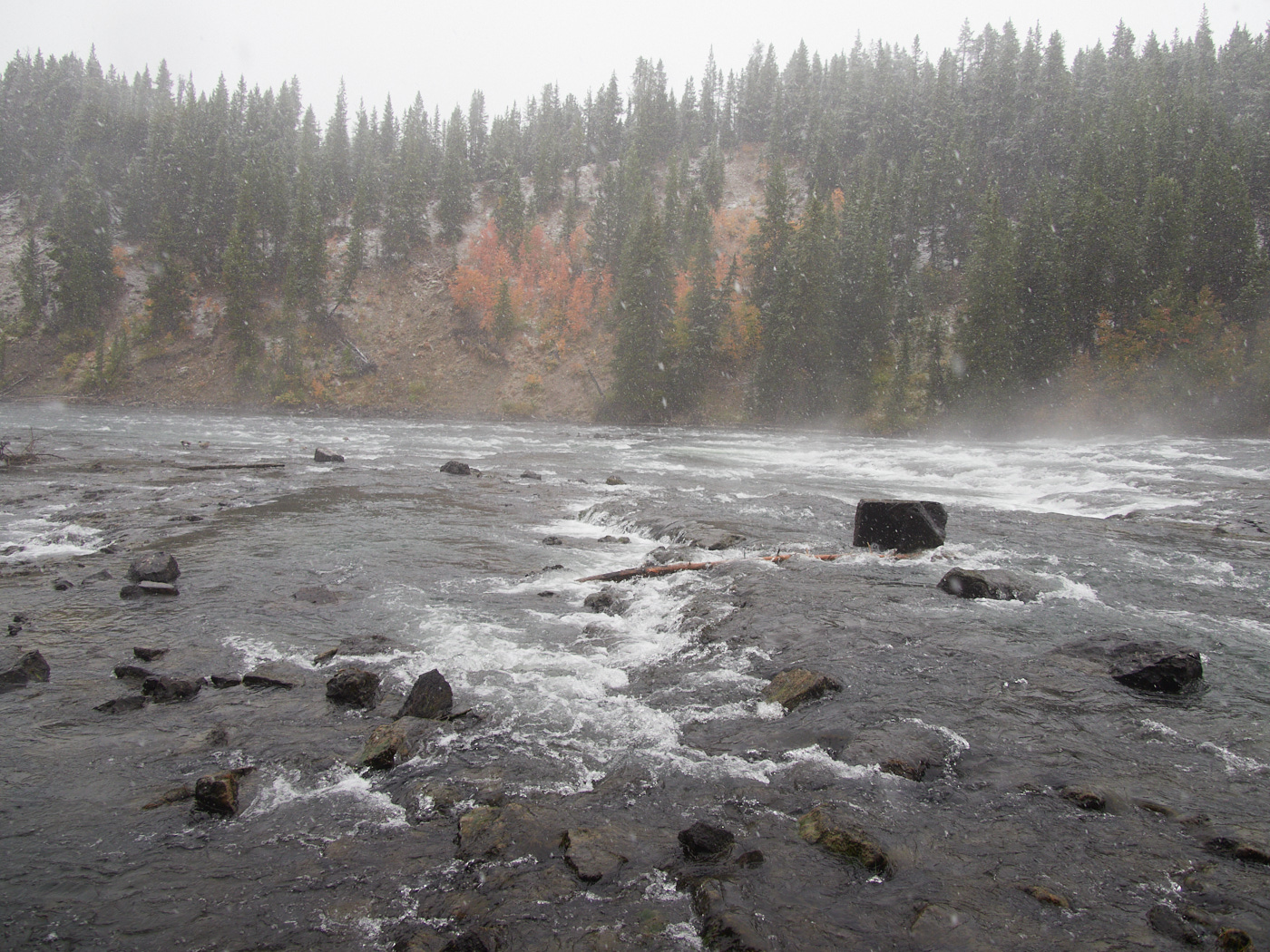
The photos with faster shutter speeds were keepers, because when the speed is slower, the snowflakes are no longer so visible, and the stopped down aperture makes it obvious just how many huge water droplets are on the front of my lens.
Mud Volcanos
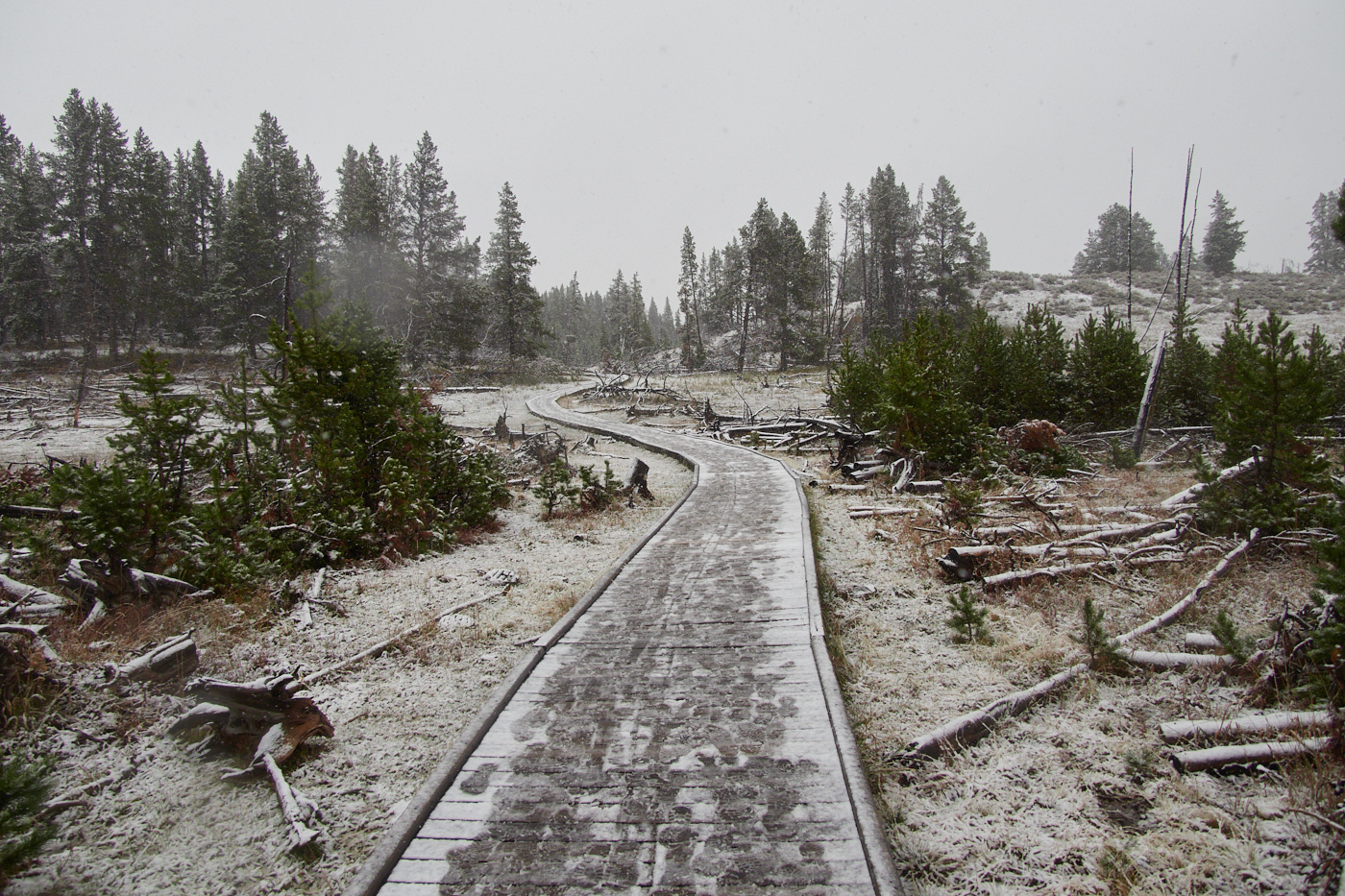
| Trail Information | ||
|---|---|---|
| Name | Mud Volcano Loop | |
| Type | loop | |
| Location | Yellowstone National Park | |
| State | WY | |
| Country | USA | |
| Miles | 0.6 | |
| Check out the trails index for information on more trails! | ||
As my shoes were still wet, I opted to walk the short, boardwalk covered Mud Volcano trail in my sandals. When walking through patches of hot steam, all was hunky dory. The rest of the time, things were a bit cold, but I was enraptured enough by the scenery not to care. I think that this wasn’t the worst idea for an 0.6 mile boardwalk, but would have been less pleasant if done longer.
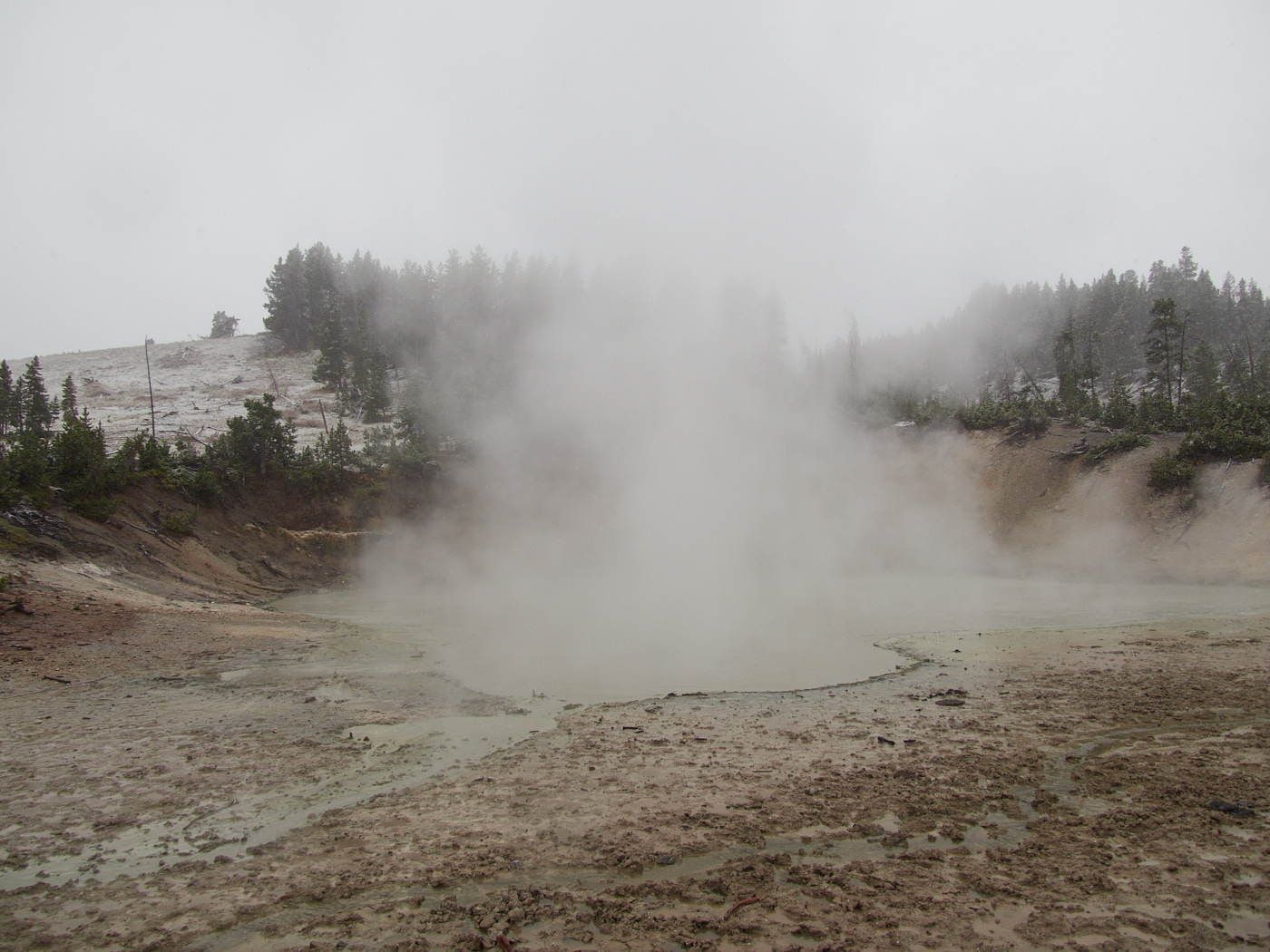
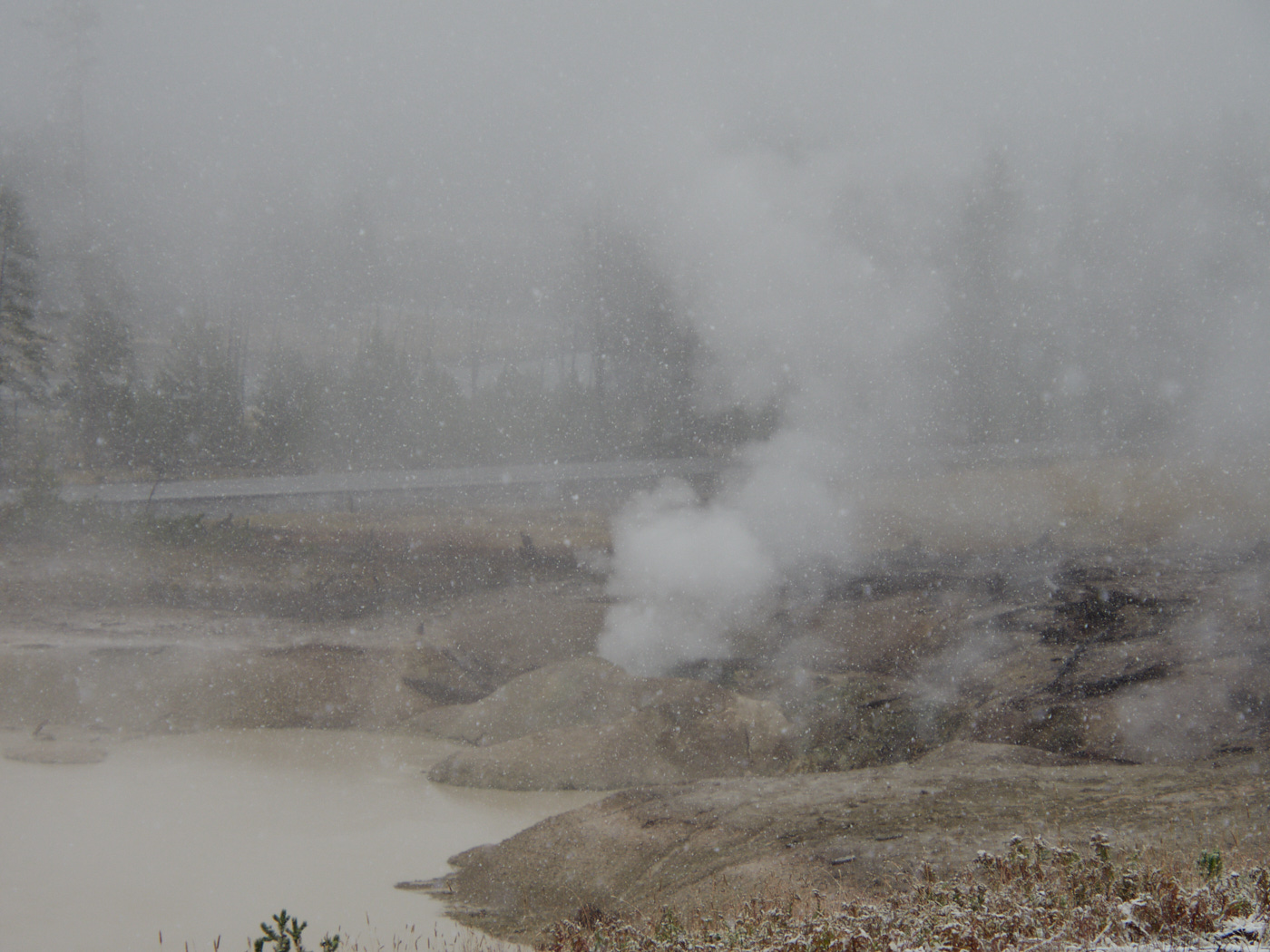
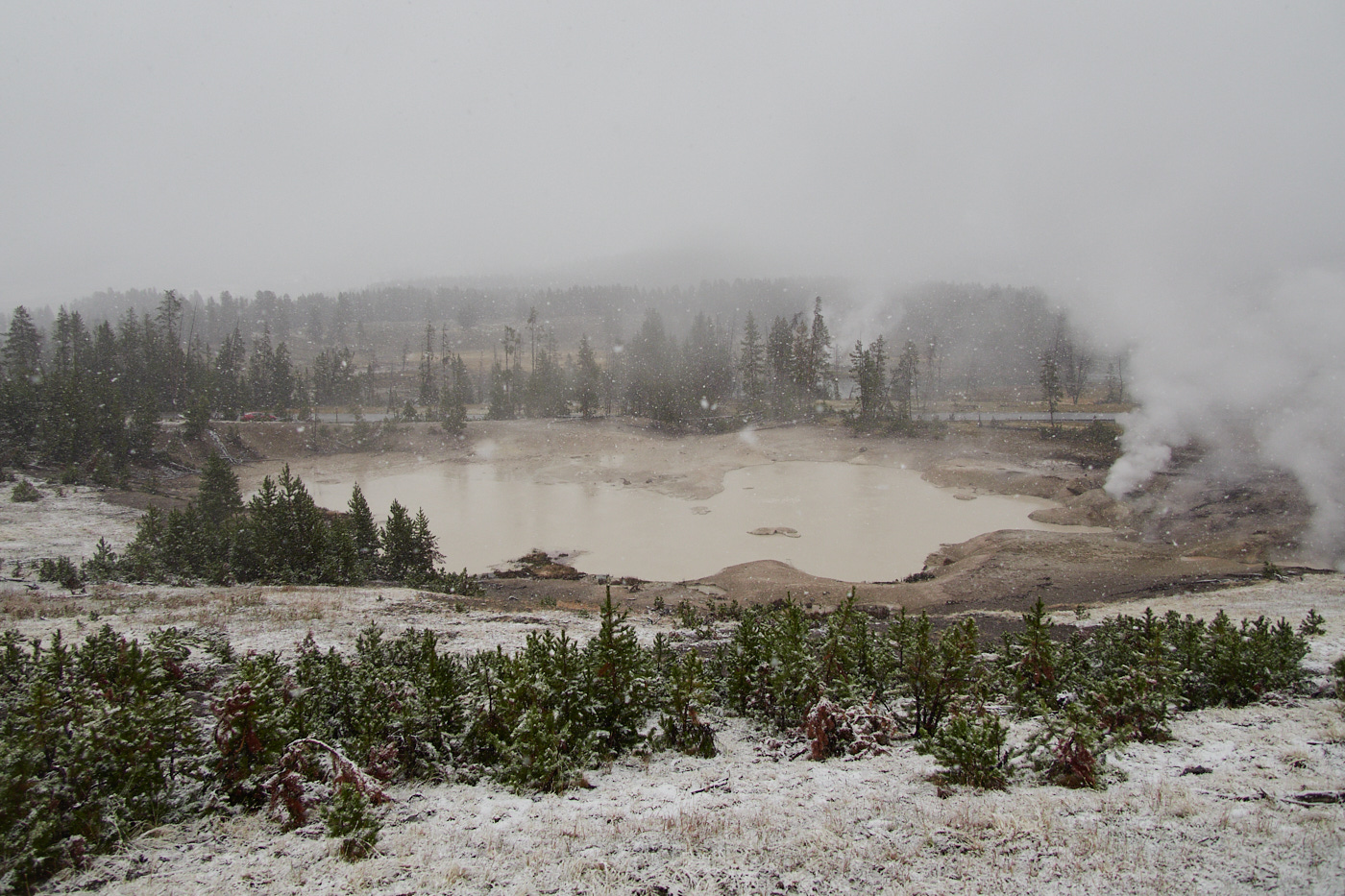
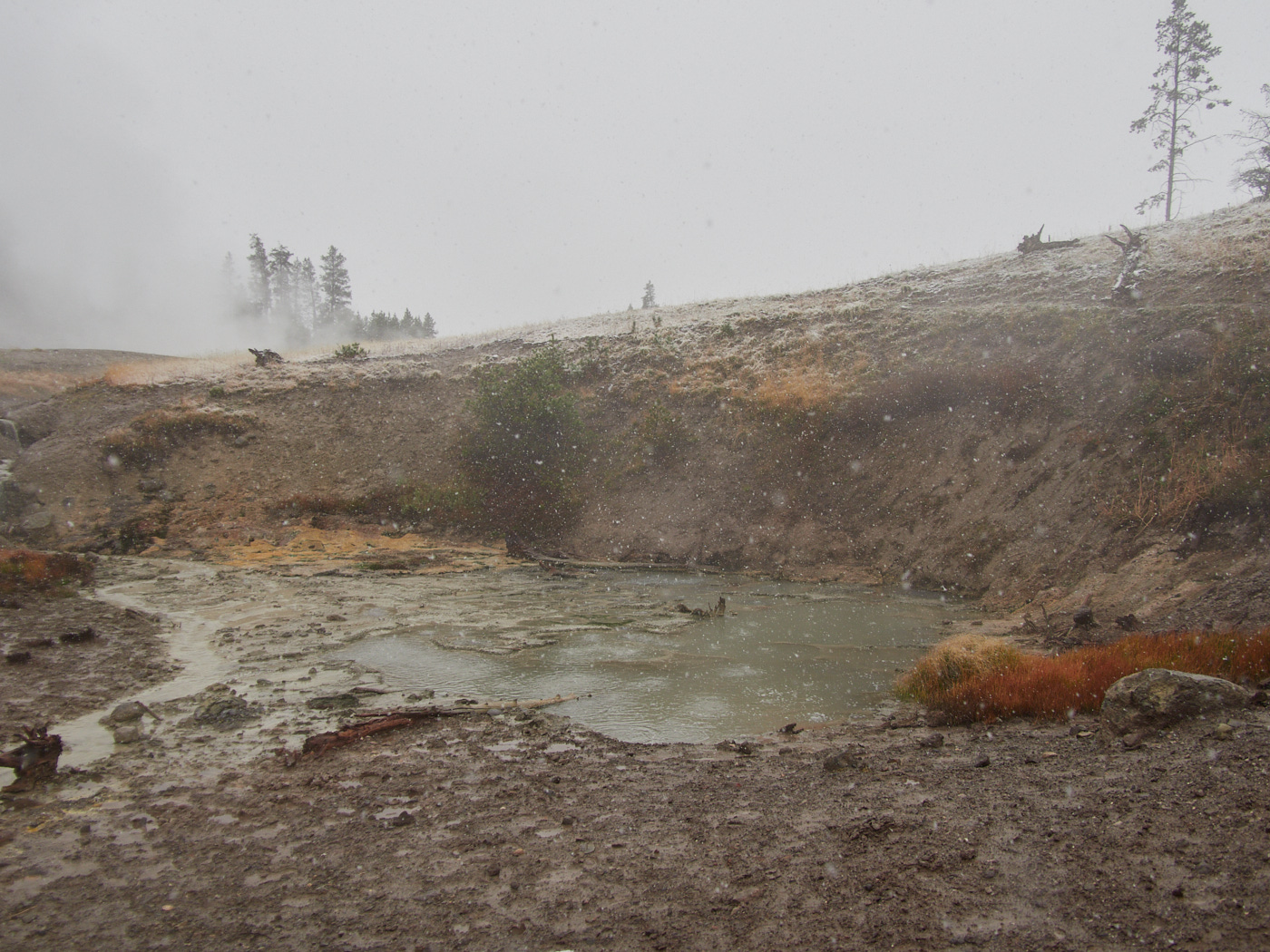

Grand Canyon of Yellowstone
I stopped at a few overlooks for the Grand Canyon of Yellowstone. Simply, beautiful.
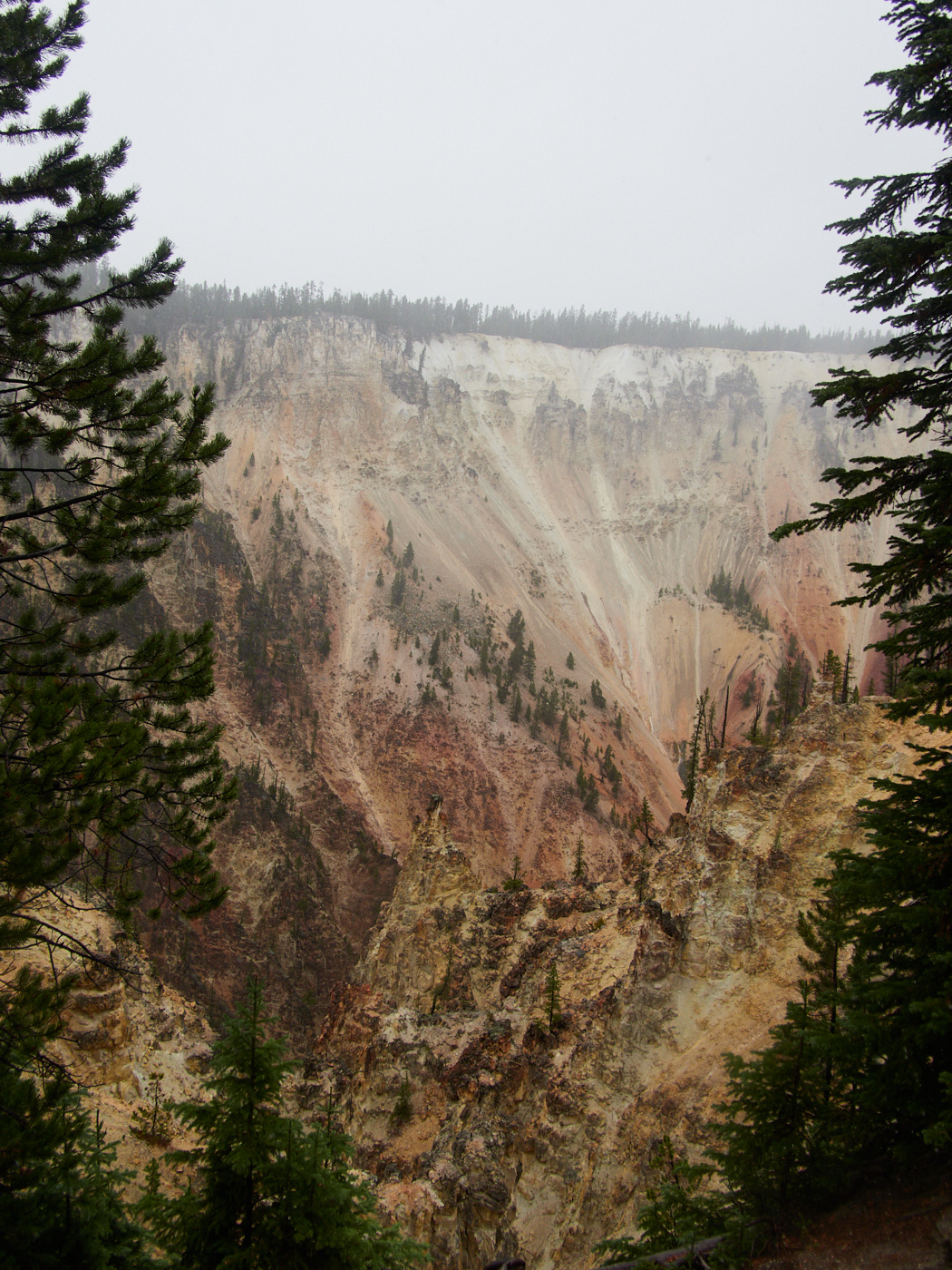
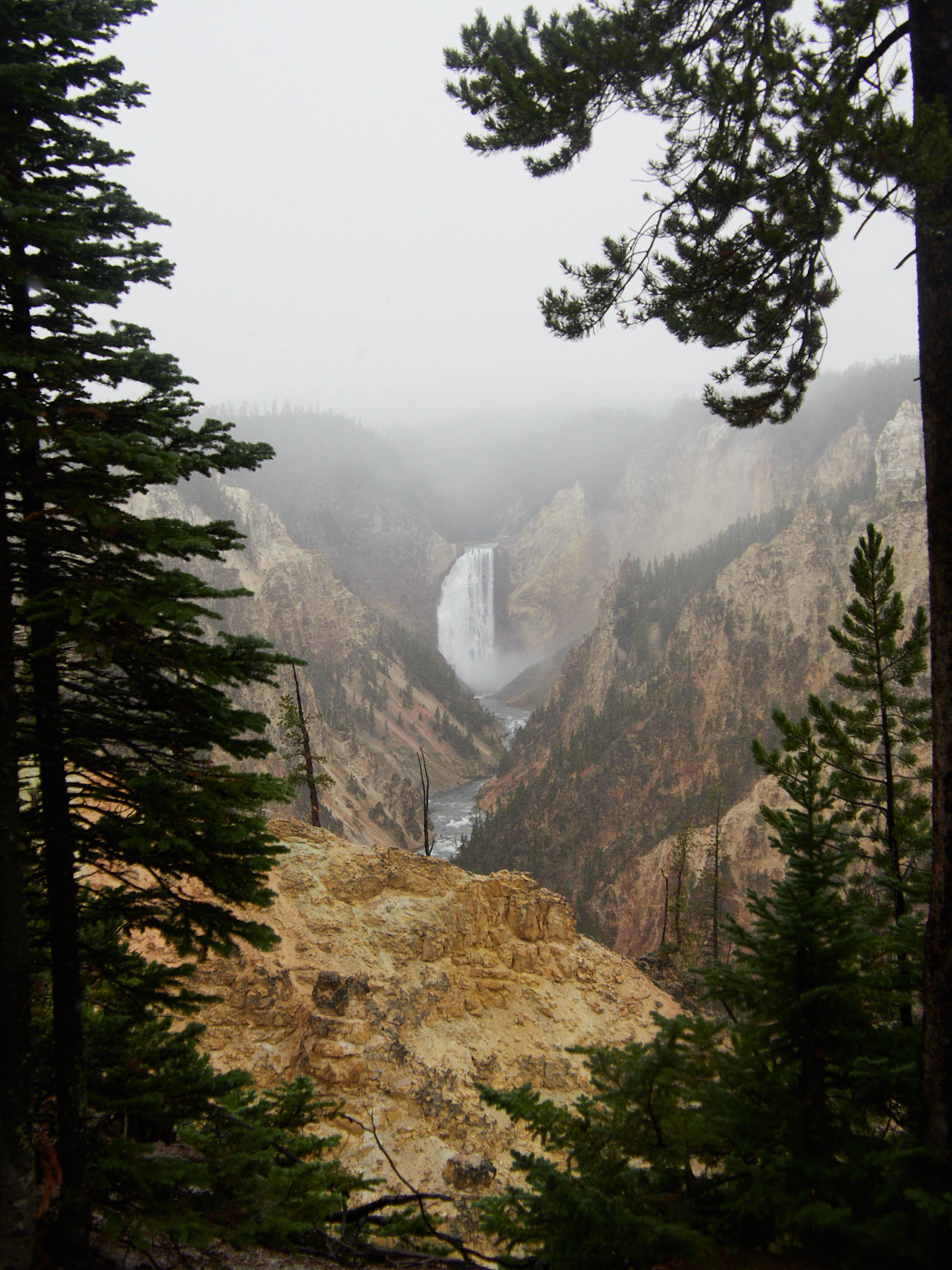
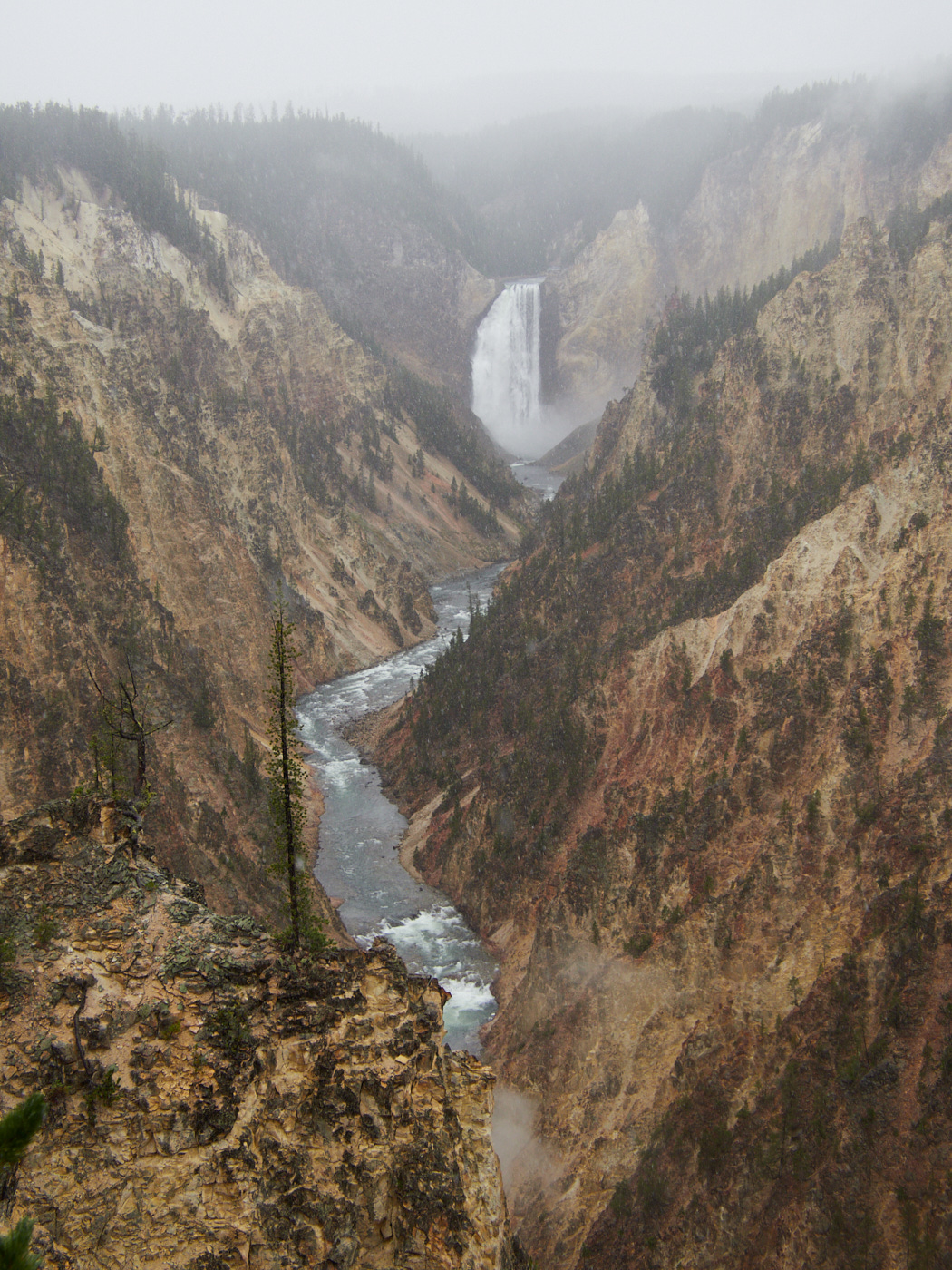
Waterfalls
You don’t have to go far to see beautiful waterfalls, either.

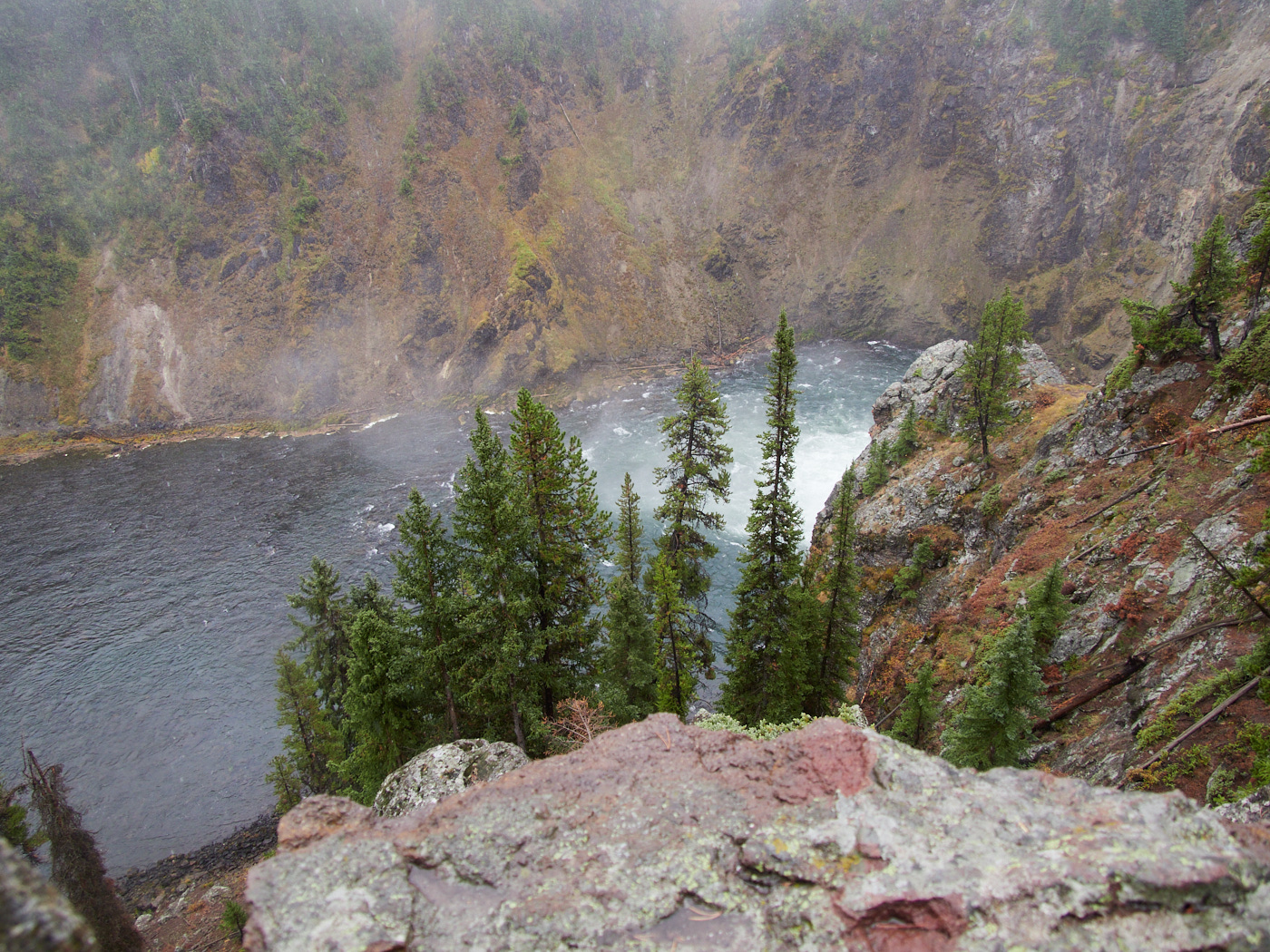
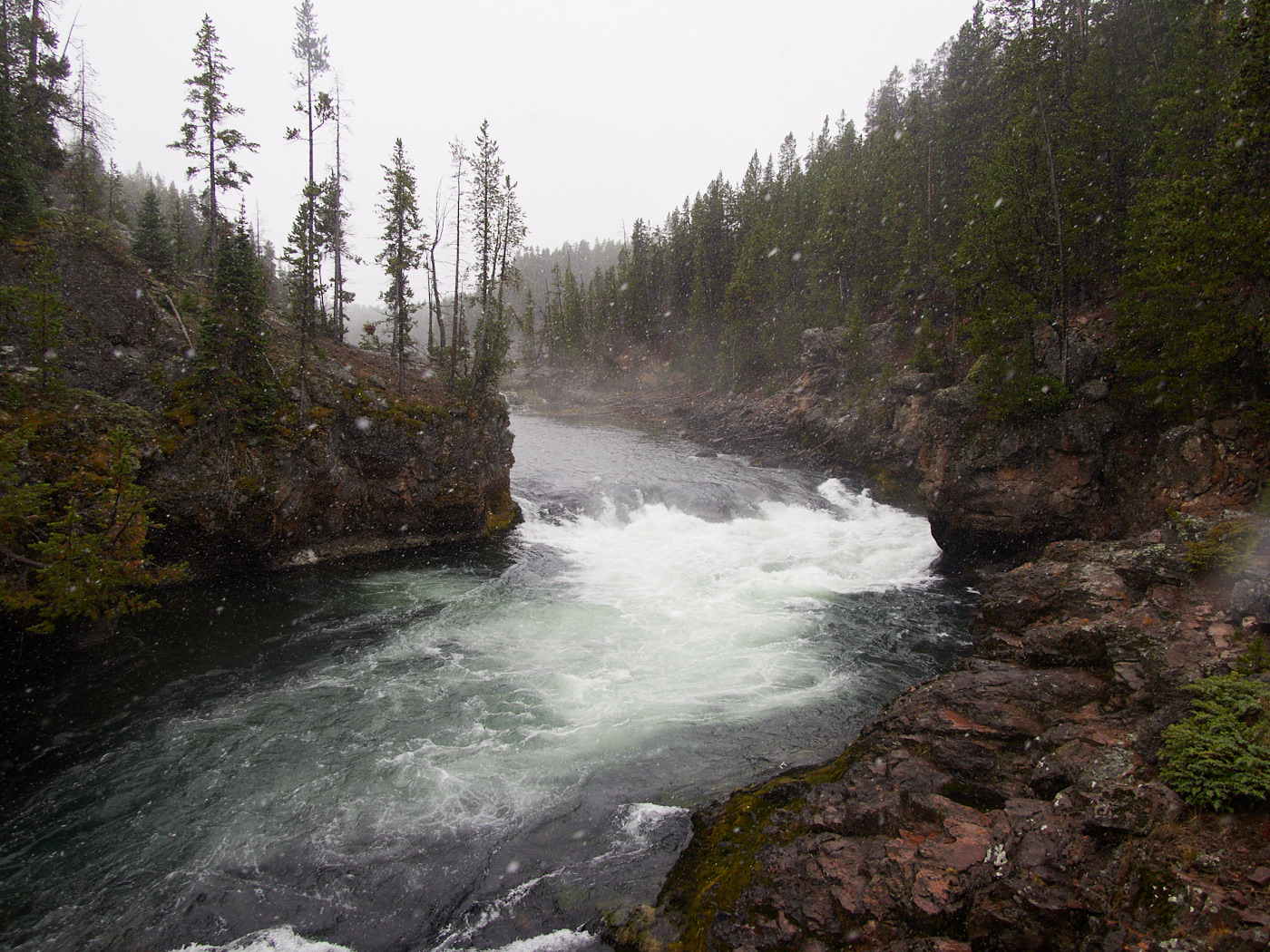
Cold Corvids
If you were going to ask me in advance what bird species I would be most excited to spot in Yellowstone, my answer probably wouldn’t have been the raven. Long a viewed as a harbinger of tragedy or a prophet of truth, ravens are large, intelligent, and prone to lingering on signage in Yellowstone’s many parking lots.
As snow continued to fall, this created an impressive contrast with the birds’ dark plumage.
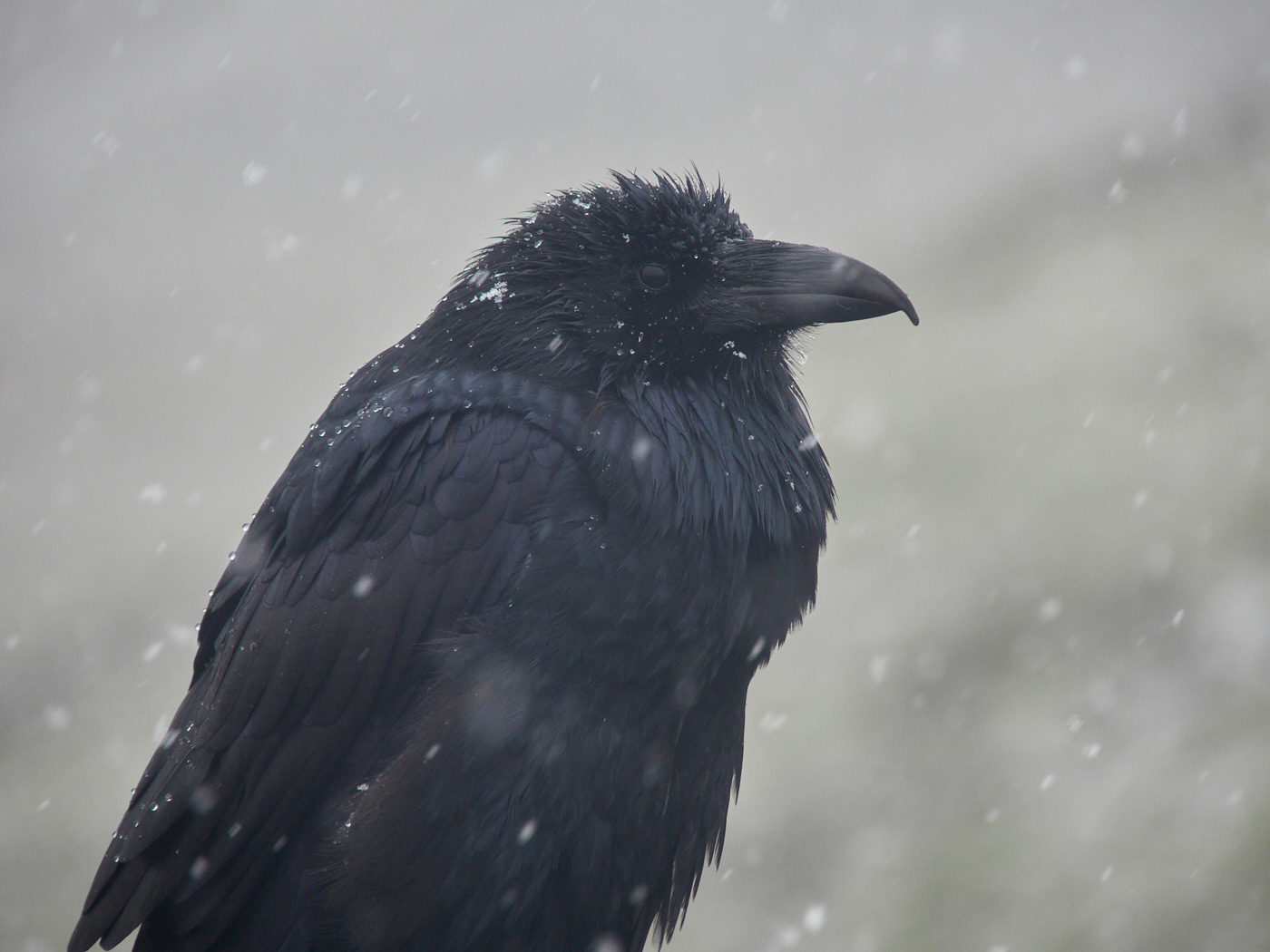
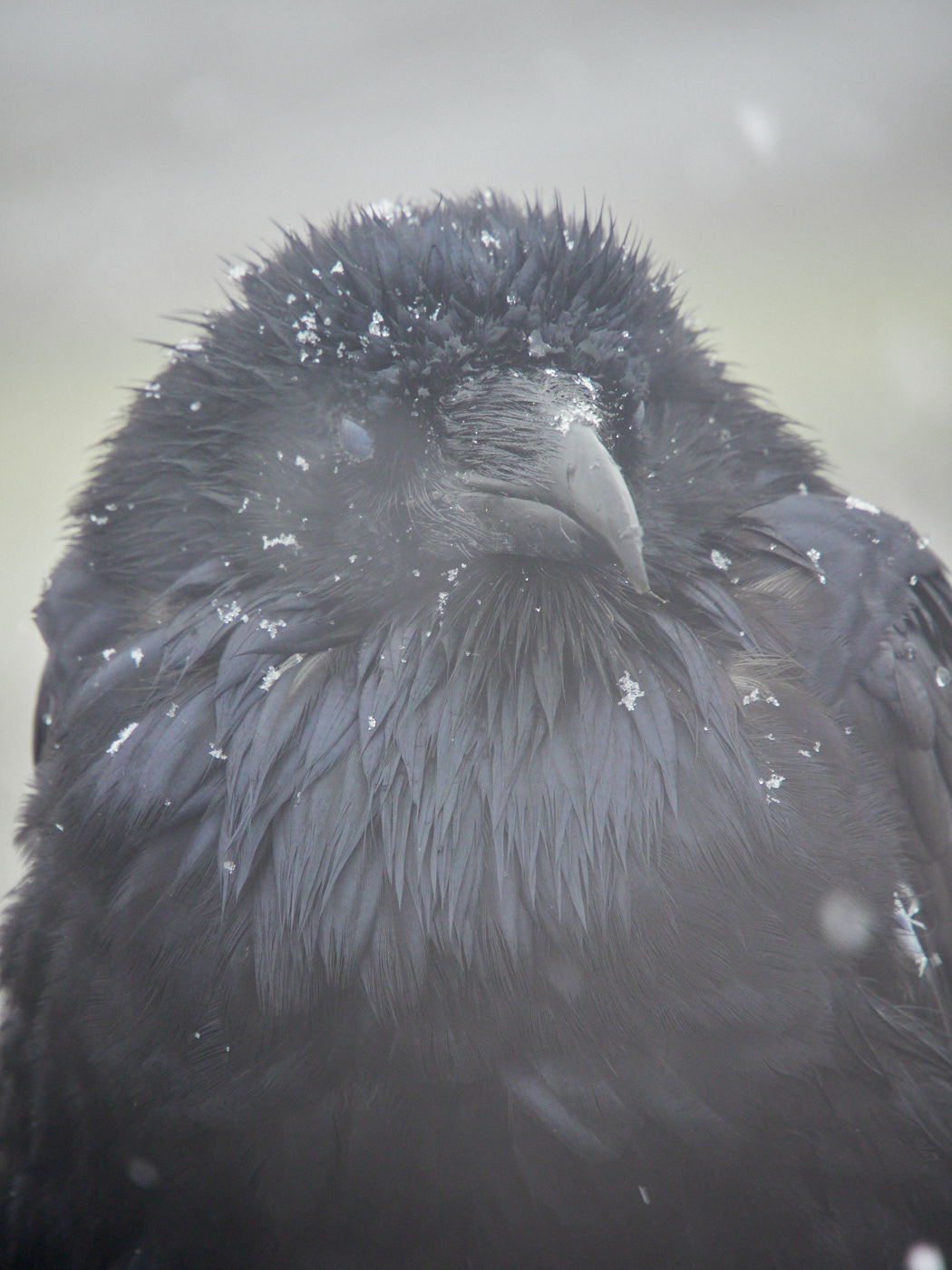
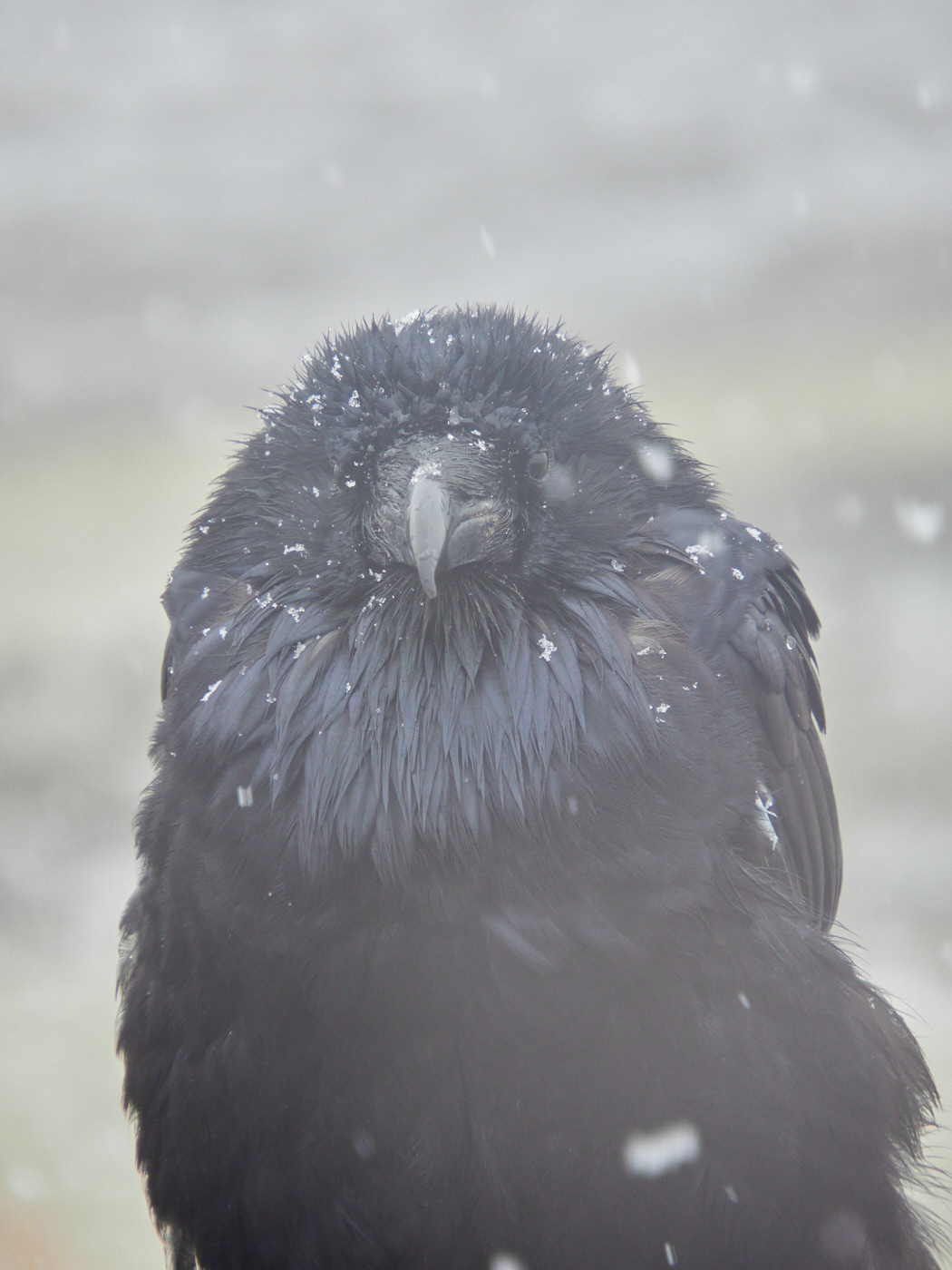
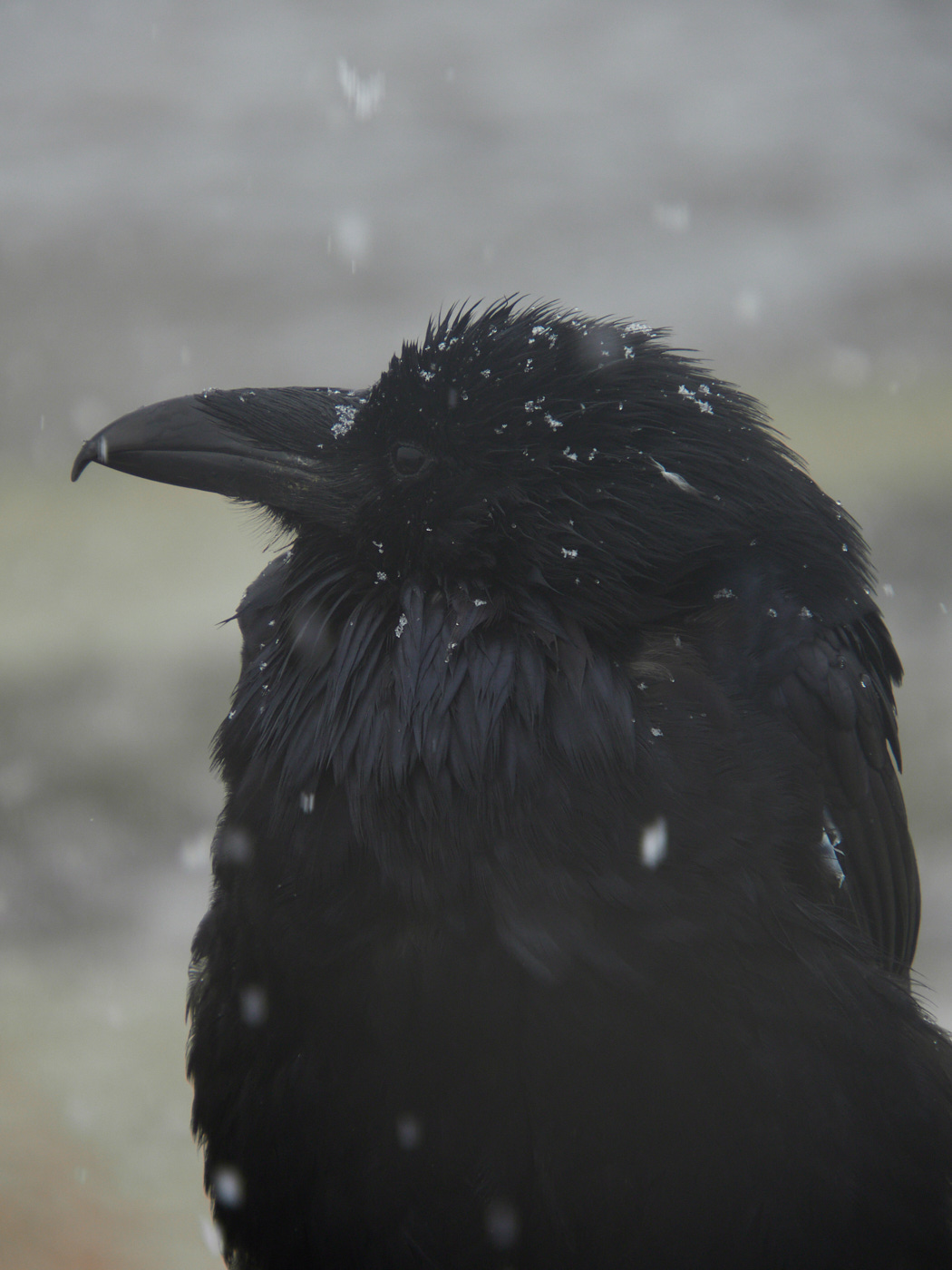
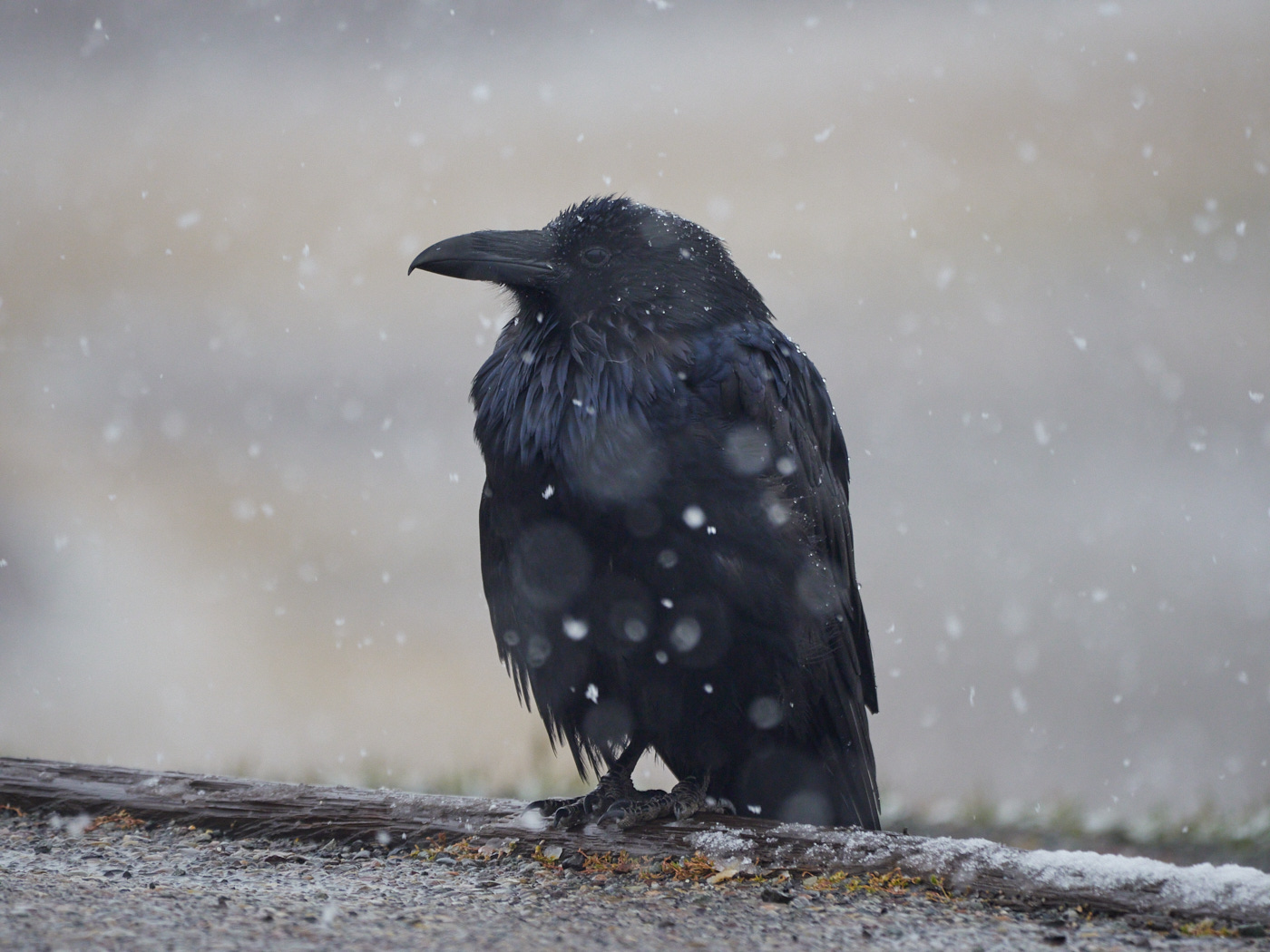
Norris Geyser Basin
My final stop of the day was the Norris Geyser Basin, home to the park’s hottest, most changeable geysers.
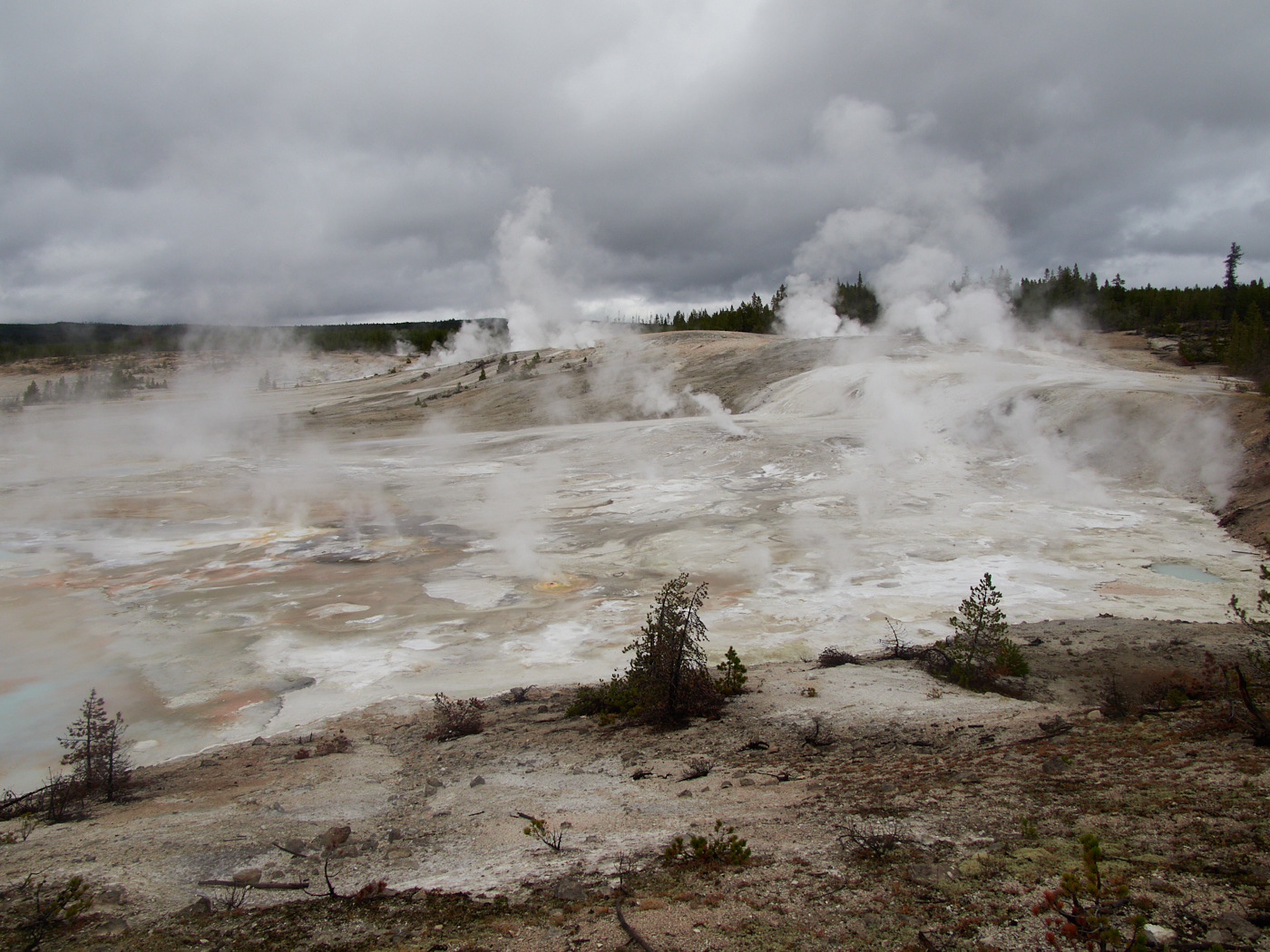
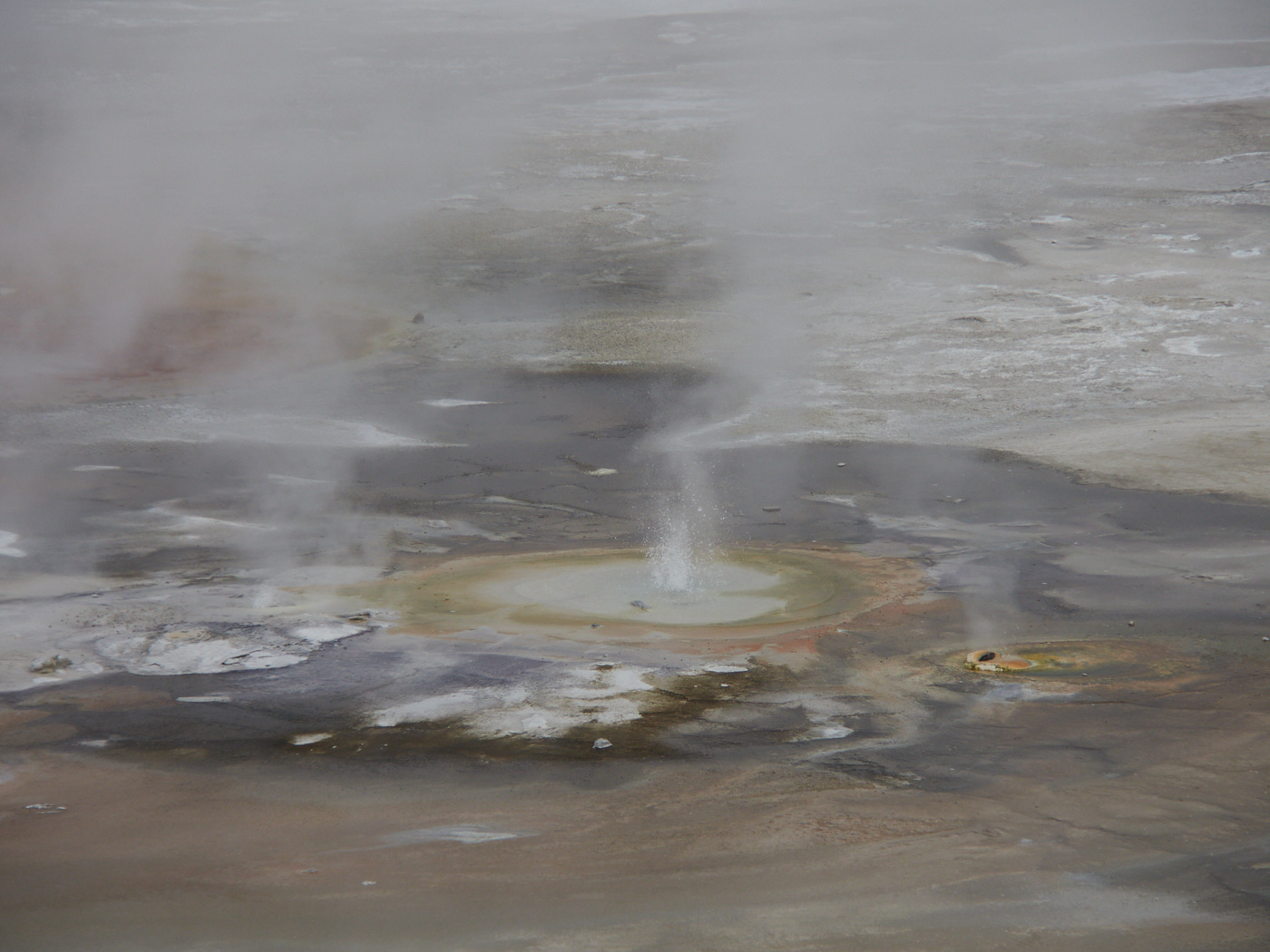
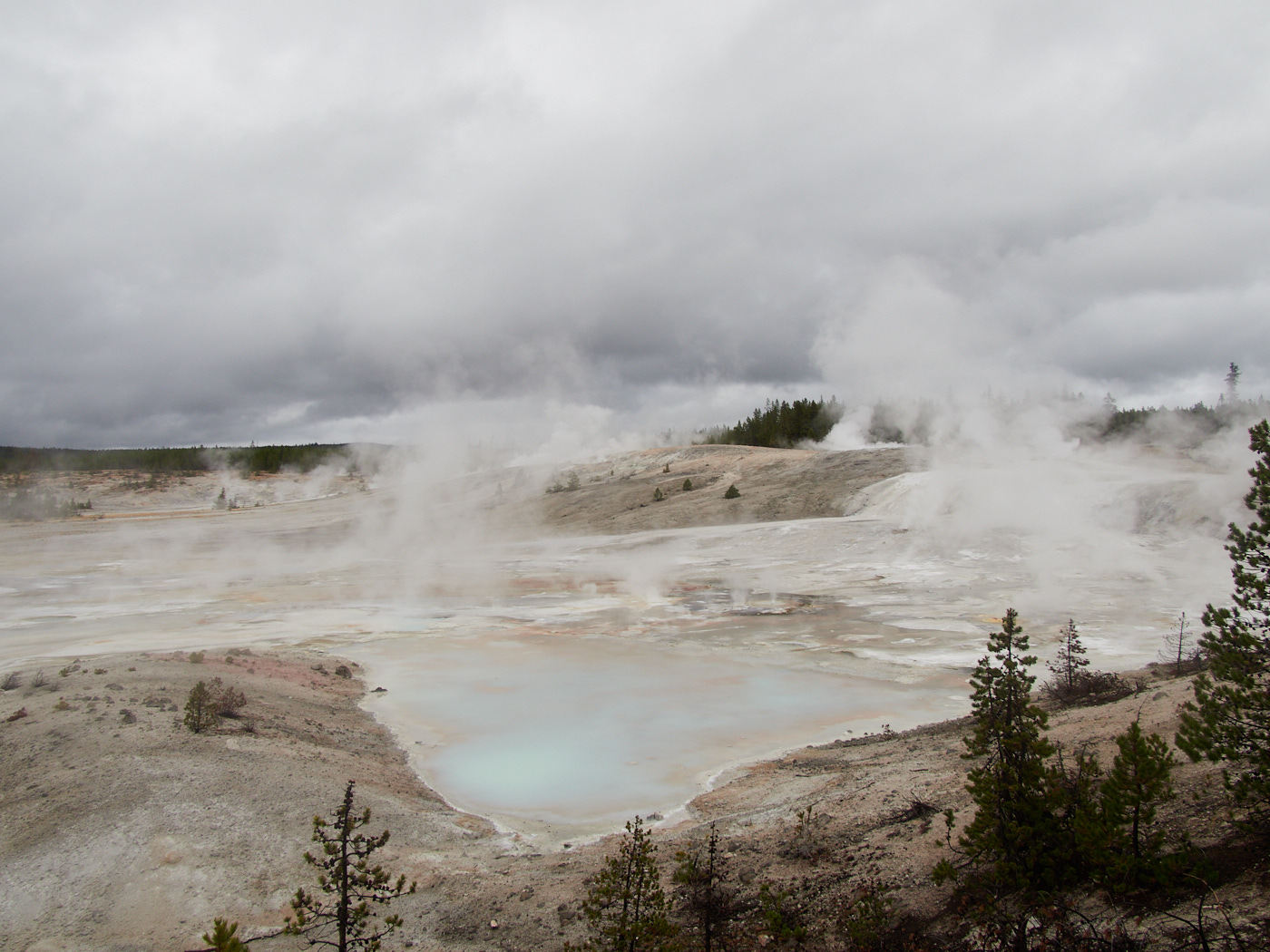
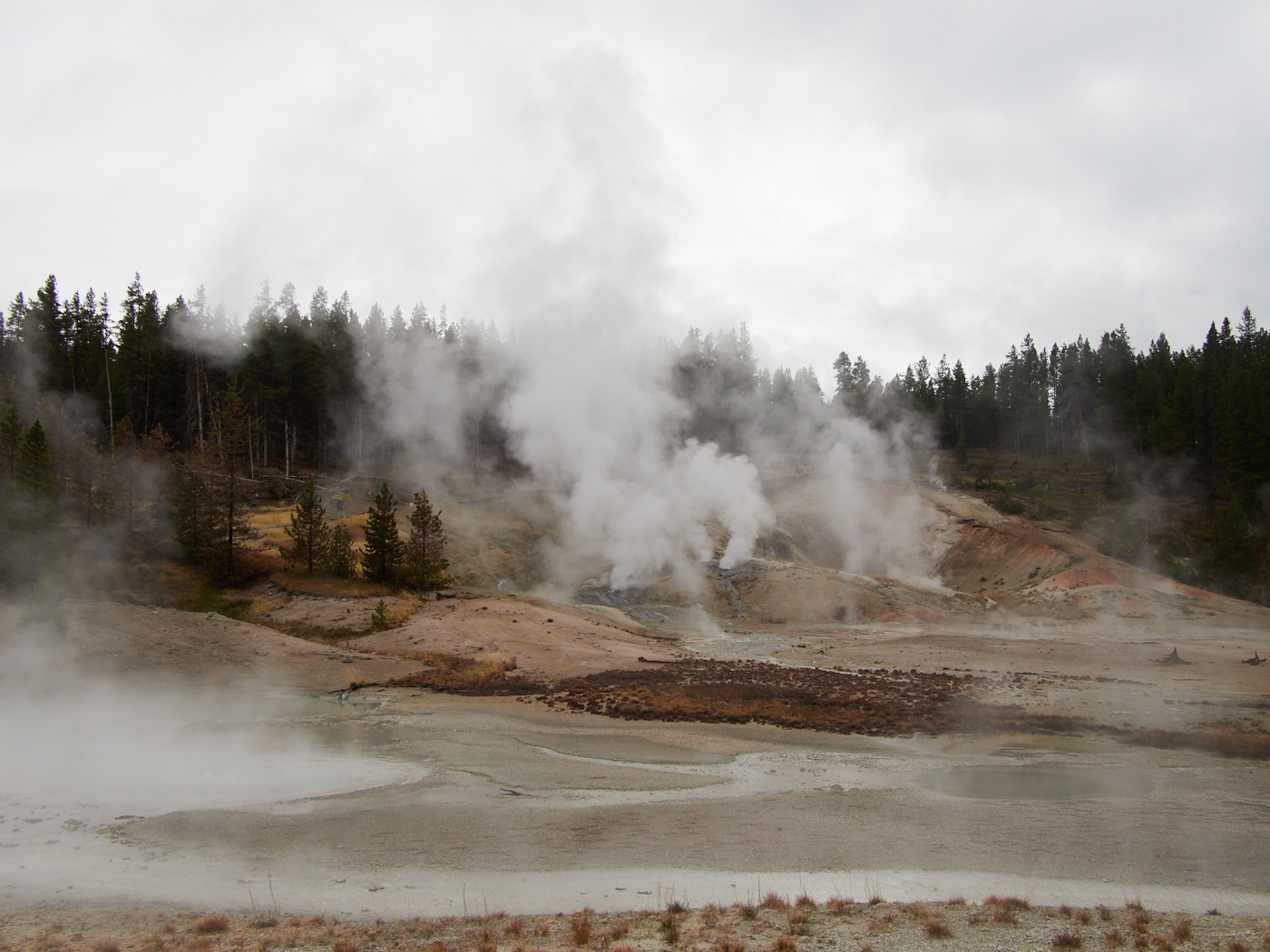
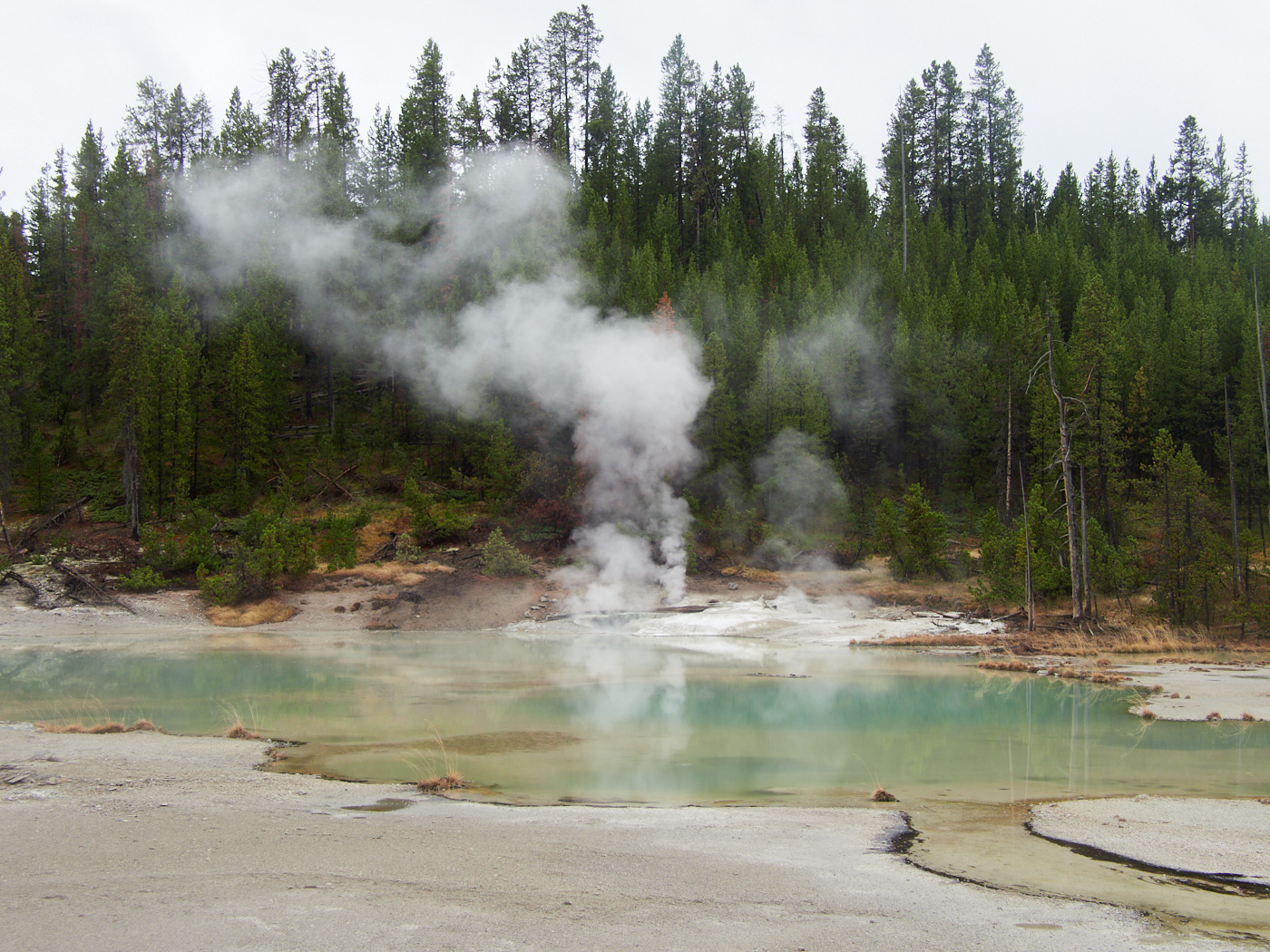
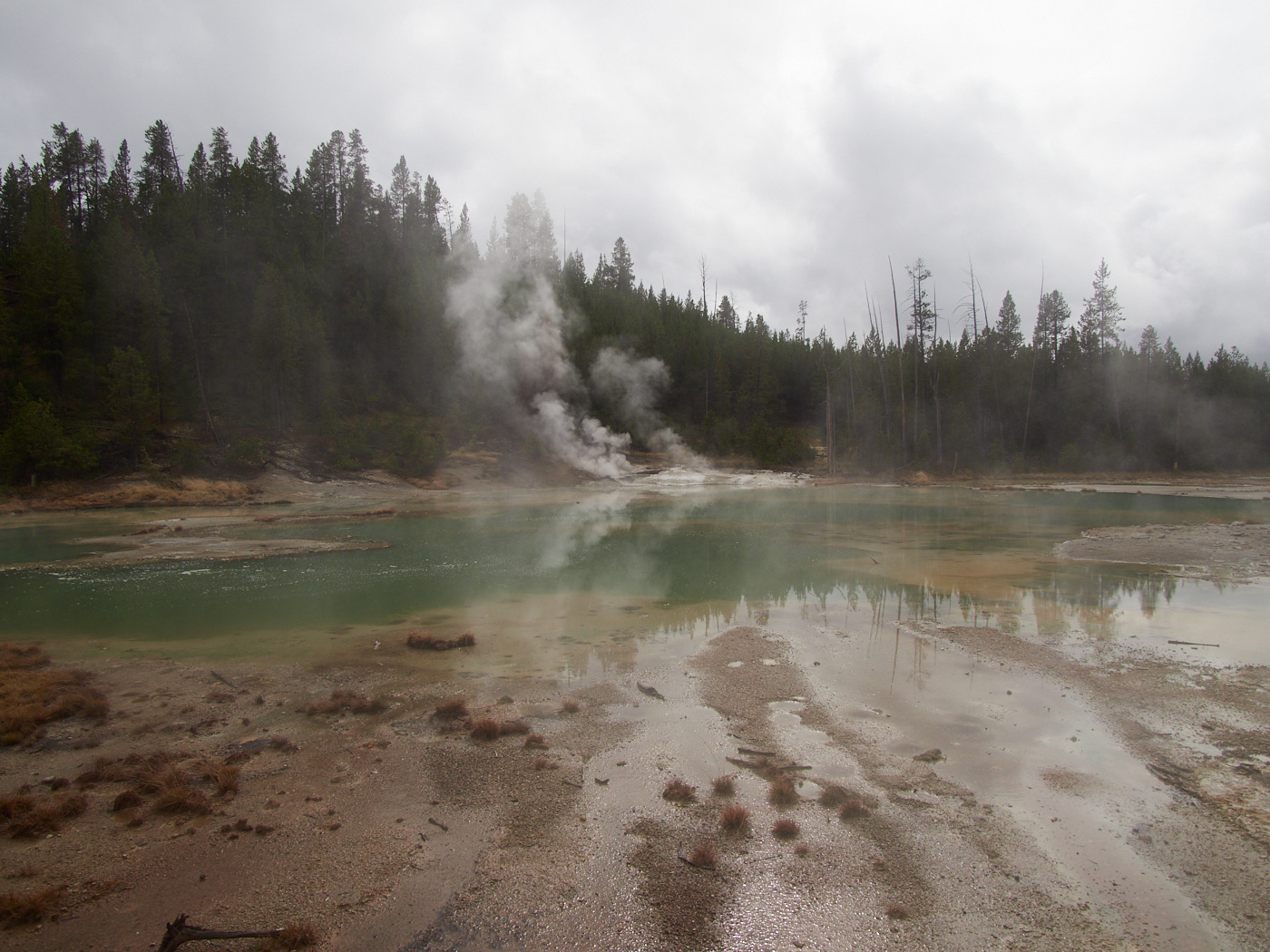
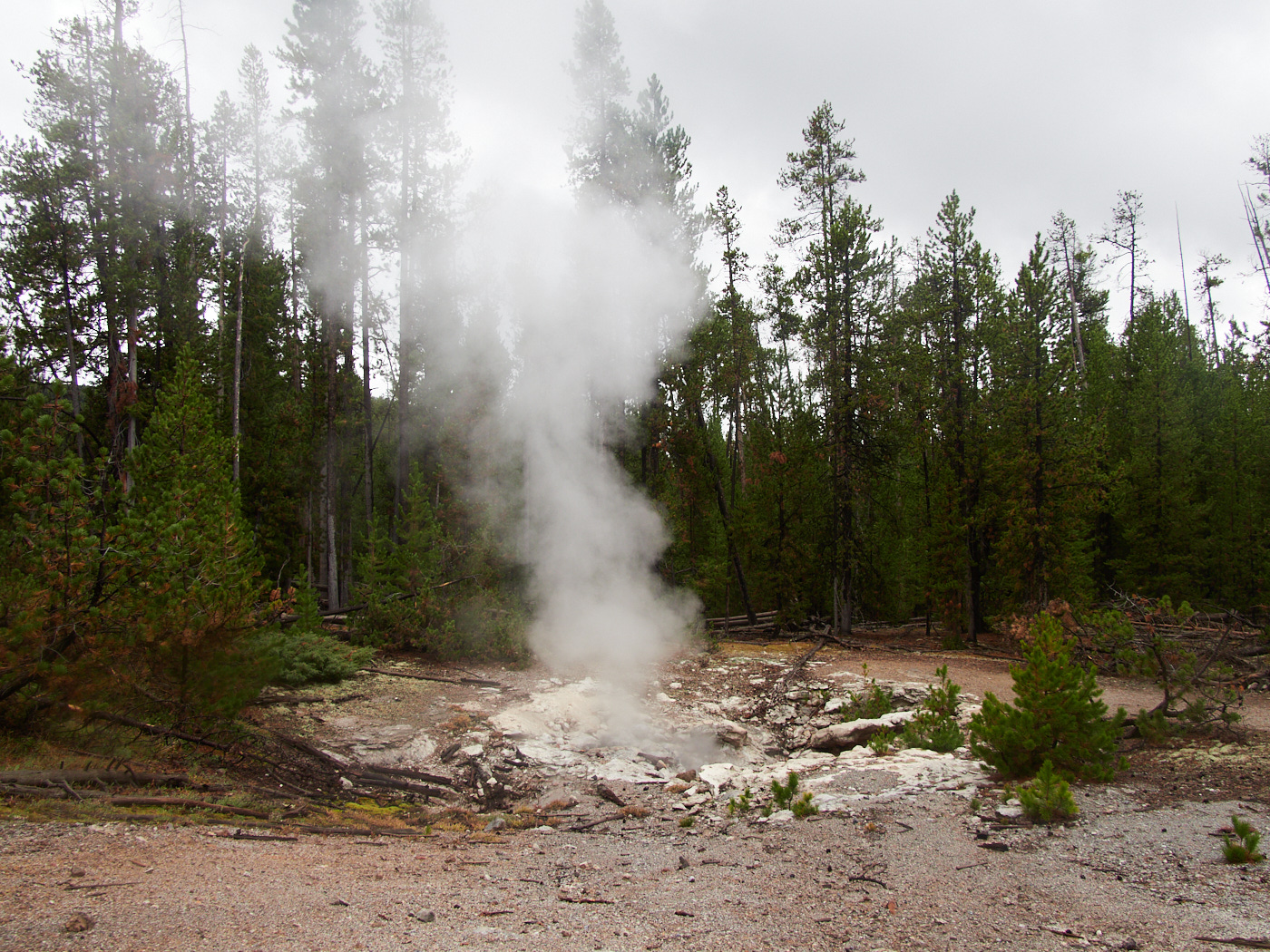
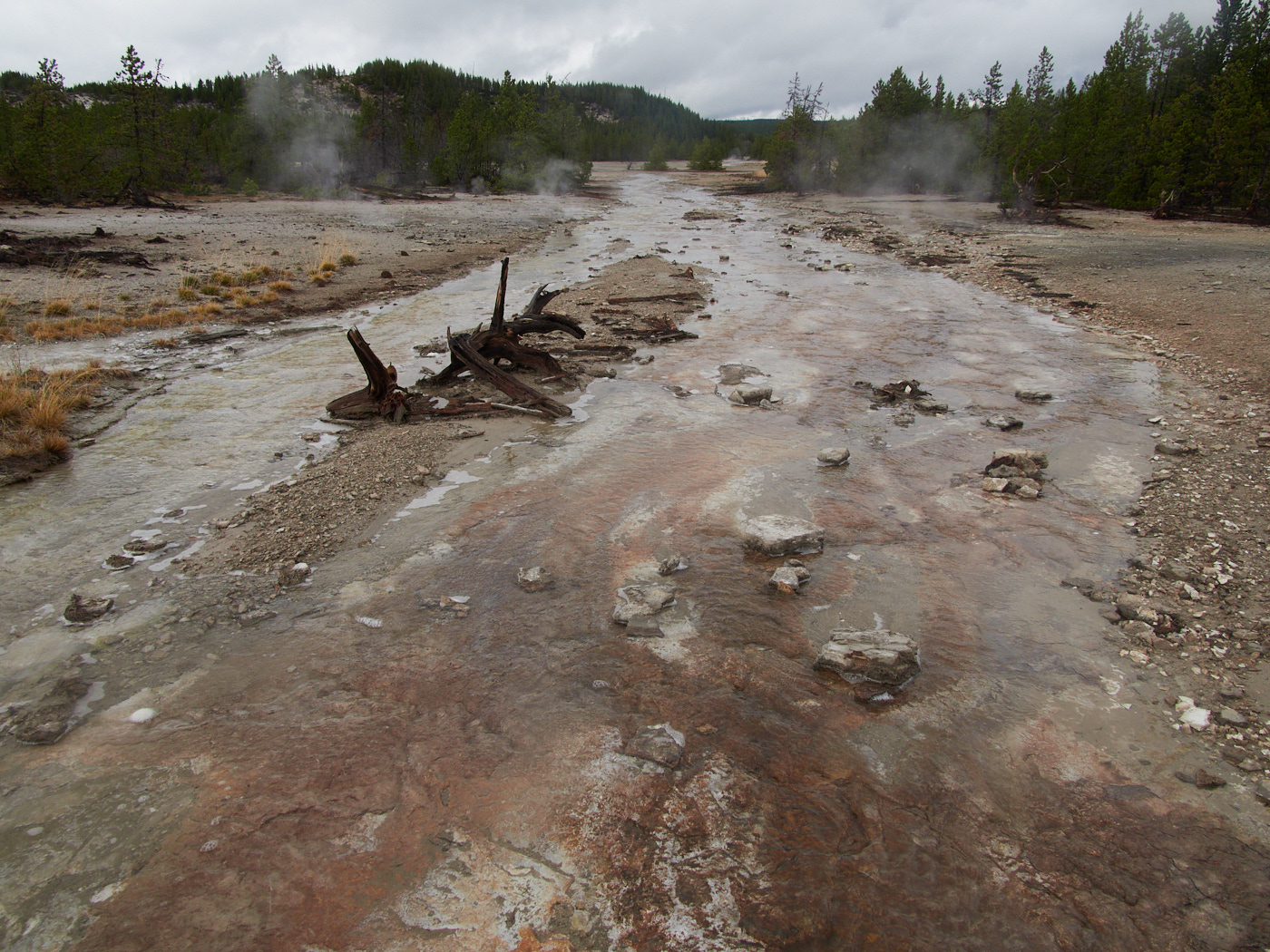
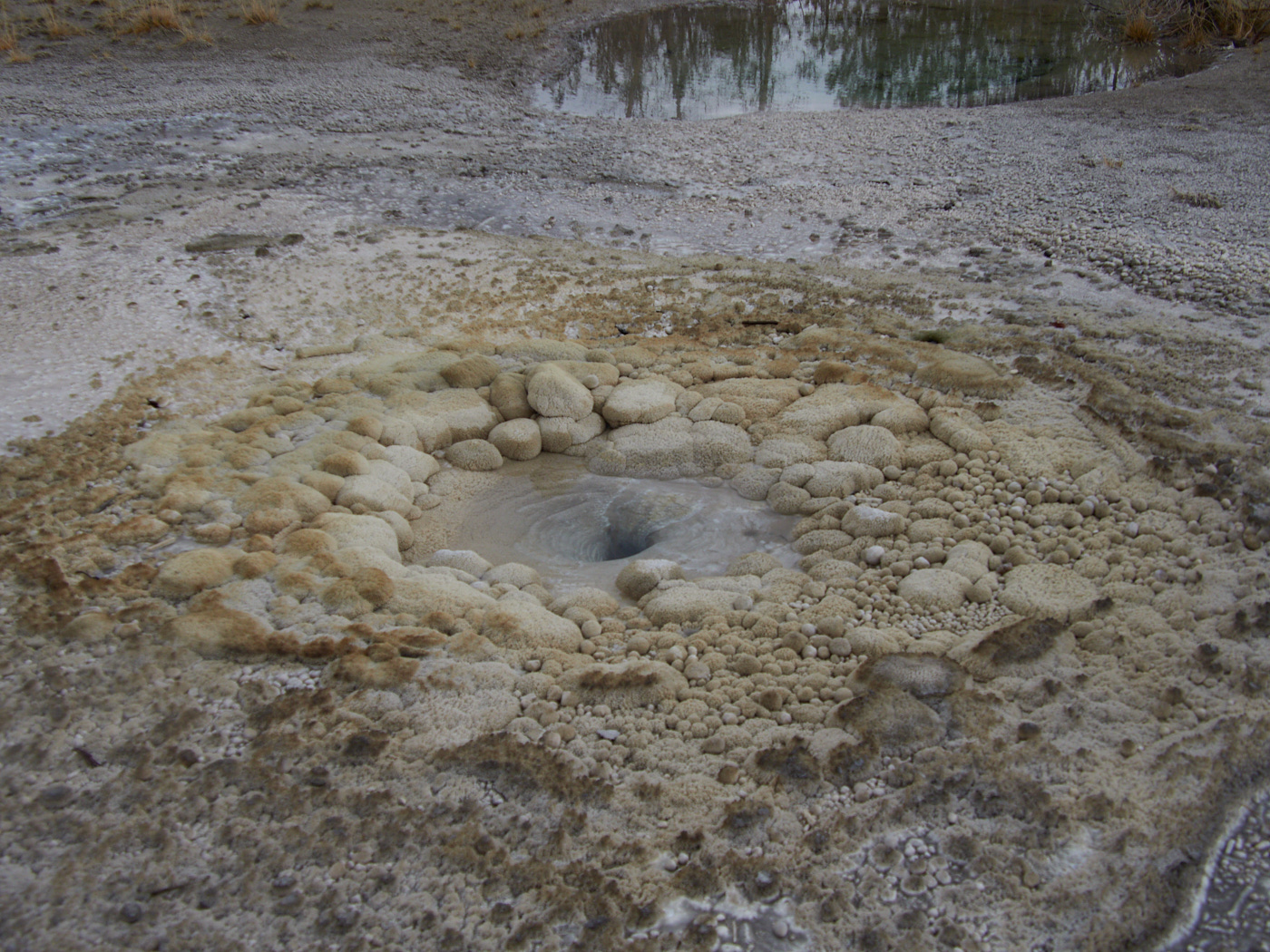
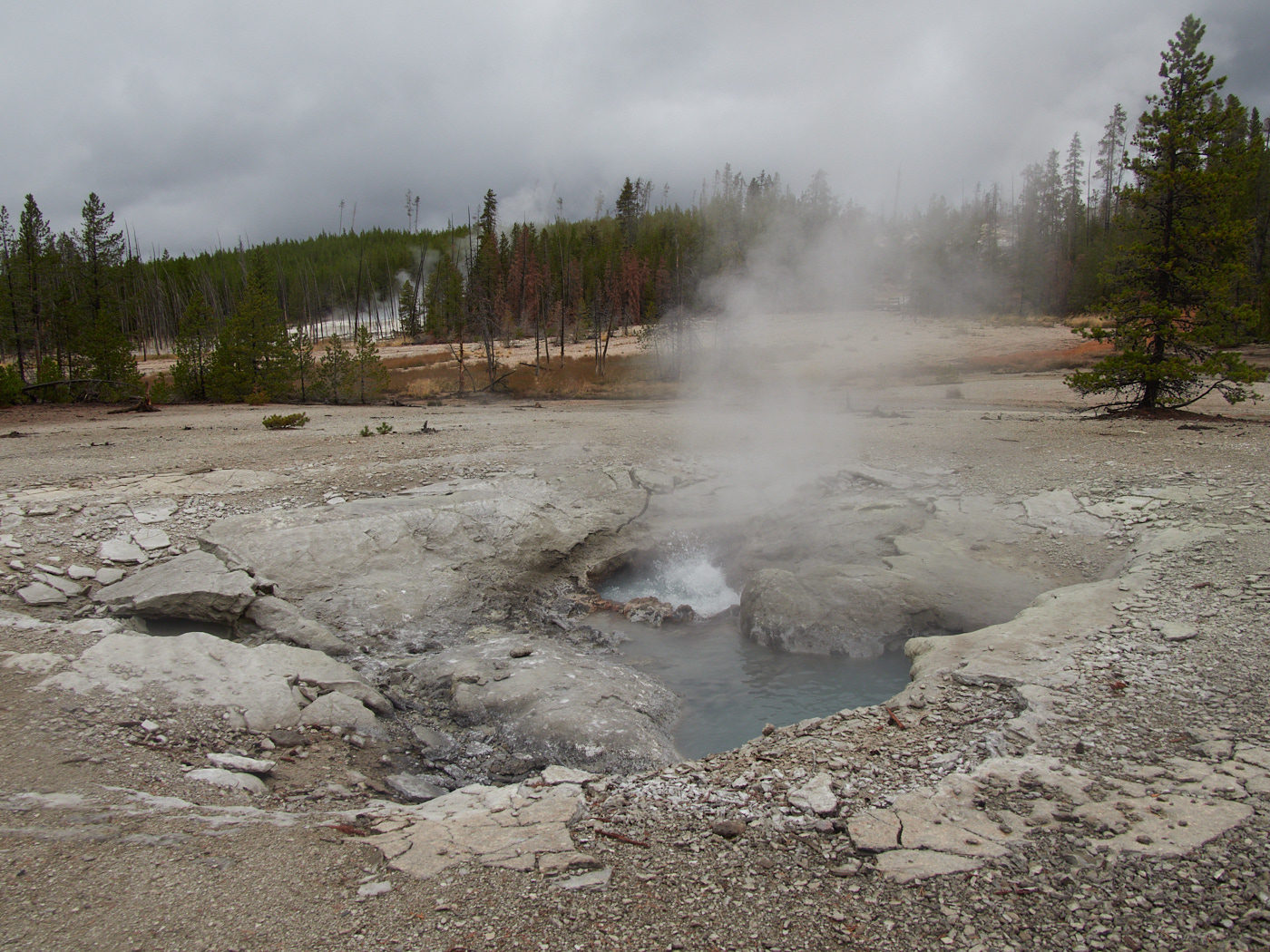
Traffic seemed to crawl to a halt as I headed towards my campground. I wondered what the commotion was about. Buffalo?
This post was part of a series:
Thanks for reading!
If you enjoyed this post, you might enjoy these 5 similar posts:
- 2022-04-07 —Old Faithful, Fairy Falls, and More of Yellowstone
- 2022-04-11 —Mammoth Hot Springs, West Thumb, and Goodbye to Yellowstone!
- 2021-12-29 —My 11-hour 16.7 mile Haleakala Crater Hike
- 2022-09-12 —A Great Day at Wells Gray!
- 2022-09-02 —A Taste of Paradise at Mt. Rainier National Park